To Book a Speaking Engagement with Sarah Lohman, please contact  Sarah directly at: sarah@fourpoundsflour.com
***
Food of the Dead
The Woodlands, Philadelphia, PA
Sunday, April 8, 2:00-4:00 pm
$35, $25 for The Woodlands & HFSDV Members (email The Woodlands for membership discount code)
To RSVP and purchase tickets at the door, please call 215-386-2181.
At the end of an early American funeral, participants were given a cookie spiced with caraway and stamped with a special design. They were often kept for years as a memento of the departed. Although mourning traditions have changed over time and vary from place to place, what they have in common is food and drink. From the home parlour to the funeral parlor from Irish wakes to sitting Shiva, consumption offers comfort in a time of grief. In this talk, we’ll look at the culinary traditions surrounding funerals throughout American history, and we’ll taste beer from Midas’s tomb, funeral cakes, and Mormon funeral potatoes.
***
The Unexpected History of American Food
Connecticut Historical Society, Hartford, CT
Saturday, April 14, 2:00-3:00 pm
$10 for members, $15 for non-members. Reservations requested at rsvp@chs.org or 860-236-5621 x238.
We’ll examine how we determine what’s ordinary and what’s odd when it comes to food. She will focus on two particular flavors that have gone through ups and downs in American food trends: garlic (once dismissed by American cookbook author Amelia Simmons as “better adapted to the uses of medicine than cookeryâ€) and the much-maligned MSG. Ms. Lohman will sign copies of her book, Eight Flavors: The Untold Story of American Cuisine, which will be available for purchase.
***
Hidden Immigration Stories of the Lower East Side: Stories and Food traditions of Local South Asian Communities
Henry Street Settlement, New York, NY
Thursday, April 26, 6:00 – 8: 00 pm
Free; registration required at henrystreet.org/HiddenHistories or at 212-766-9200X350
Join Sarah and MIT scholar Vivek Bald, author of Bengali Harlem and The Lost Histories of South Asian America and co-director of the documentary film In Search of Begali Harlem for conversation about South Asian food traditions in our area. Includes, of course, complimentary food tasting!
***
Advanced Open Fire Cooking: Fine Dining on Flames
Brooklyn Brainery, Brooklyn, NY
$65. Purchase tickets here.
This course is for students who have taken the Intro to Fire Cooking course and will focus on advanced techniques. We’ll make doughnuts, pizzas, a roast, and charred glazed peaches to name a few dishes. The class will cover ash cooking, ovens, roasting, brûlée, deep–frying and more. You’ll also have freedom to experiment with access to expert advice. We will make a feast and you will be full of food and knowledge by the end, and graduate a guaranteed fire-cooking bad ass.
This class will take place outdoors at the Old Stone House in Park Slope, Brooklyn (located at 5th Ave and 3rd Street). Details will be sent the day before class.
***
Intro to Open Fire Cooking: Campfire Cuisine Beyond Hot Dogs
Brooklyn Brainery, Brooklyn, NY
Sunday, April 29, 2:00 pm- 5:00 pm
$55. Â Purchase tickets here.
In this hands-on class, you’re going to learn how to cook over an open fire. But what you’ll really learn are the primal cooking skills that will make you a better cook in your daily life.
We’re going to cover the four basic cooking techniques: baking, roasting, frying and boiling. While preparing a meal on an outdoor hearth, you’ll learn how to tell temperature without a thermometer, how to tell the doneness of food by using all of your senses, and how to build a bad-ass fire.
This class will take place outdoors at the Old Stone House in Park Slope, Brooklyn (located at 5th Ave and 3rd Street). Details will be sent the day before class.
***
The Masters of Social Gastronomy Present: The Secret History of Bodegas
Caveat, New York, NY
Monday, April 30, 7:00 pm
$10 in advance, $12 at the door. Â Purchase tickets here.
Sarah and fellow Master of Gastronomy Jonathan Soma will explore the history of bodegas and their connection to the origins of New York City itself. Hear how wave after wave of immigrants – Germans, Dominicans, Koreans, and more – each left their mark upon this New York institution. We’ll also be uncovering stories some of your favorite bodega products. What exactly is hiding in that Boar’s Head deli meat, and why is it the undisputed king of New York sandwiches?
And bodega cats. We’ll definitely be talking about bodega cats.
Please note this is a mixed seated and standing venue; arrive early for the best seats. Doors open at 7:00 pm. 21+.
***
The Masters of Social Gastronomy Present: Illicit Substances at Kings County Distillery
Kings County Distillery, Brooklyn, NY
Monday, May 7, 7:00 pm-9:00pm
$12. Â Purchase tickets here.
Join Sarah and fellow Master of Gastronomy Jonathan Soma as they get high with the Victorians! From patent medicines to absinthe, Coca-Cola to laughing gas, we’ll start with a look at all the forms of socially acceptable substance abuse during the 19th century.
Later, we’ll fast-forward to modern-day America, where quasi-legal marijuana has spawned an industry of cannabis edibles. We’ll survey the range of altered-state culinary concoctions and see what both science and chefs have to say about epicurean euphoria.
For Storytime, we’ll explore the 1971 cookbook “Supermother’s Cooking with Grass,” and this mama’s not using lawn clippings. For those preferring to stay on the good side of the law, we’ll also see if vodka sauce can make some seriously drunken noodles.
This talk will be held at the Kings County Distillery, in the Brooklyn Navy Yard at the 299 Sands Street entrance. Entrance details will be provided the day before the event. 21+ only. There will be a mix of seating and standing room. Doors open at 6:30 pm; the talk begins around 7:00 pm.
**
The Masters of Social Gastronomy Present: Strange Meat at the Institute of Culinary Education
Institute of Culinary Education, New York, NY
Tuesday, May 8, 6:30 pm-8:30 pm
$15. Purchase tickets here.
Join Sarah and fellow Master of Gastronomy Jonathan Soma for a special evening at the Institute of Culinary Education looking at a mysteriously off-the-menu topic: STRANGE MEAT!
Sarah, ever the outdoorsman, will recount her adventures eating beaver, bear, and mouse “mouffle,” along with the historic precedent for each.
Soma will take on unusual meat preparations, from how to turn beef jerky into cotton candy to what to do with a pig’s head (or a cow’s head, if you have a driver’s license). He’ll also be getting to the root of the oft-misquoted line, “a bird in the hand is worth two sharks in the ground.”
In addition, ICE instructor Emily Peterson will lead a cooking demonstration.
Drink and a snack included. 21+ only. This talk takes place at the Institute of Culinary Education, 225 Liberty Street in Manhattan. You must enter a first and last name on the next page in order to receive admission to the event
***
The Eight Flavors of American Mixology
Prospect Heights Brainery, Brooklyn, NY
Tuesday, February 27, 6:30 pm- 8:00 pm
$12. Â Purchase tickets here.
Inspired by her popular book, Eight Flavors: The Untold Story of American Cuisine, culinary historian Sarah Lohman uses eight different ingredients as a path to explore the history of American mixology, from the 18th century to the present day. This talk will explore the histories of juniper, citrus, nutmeg, ice, anise, grenadine, cola, and flavored vodka; with brief digressions into tea, bitters, eggs, hay, the “no flavor†push of the vodka era and Red Bull.
***
Ranji Smile: America’s First Celebrity Chef
Prospect Height Brainery, Brooklyn, NY
Tuesday, March 12, 6:30 pm-8:00 pm
$12. Â Purchase tickets here.
Long before NYC had Danny Meyer, the charismatic chef J. Ranji Smile took the city by storm.
Arriving in NYC in 1899, Smile introduced Indian cuisine to the well-to-do, ushering curry into America’s foodie lexicon. In this talk, Sarah Lohman will trace the life of this fascinating chef.
***
A Brief History of Irish Food
Prospect Heights Brainery, Brooklyn, NY
Tuesday, March 13, 6:30 pm-8:00 pm
$12. Â Purchase tickets here.
Sarah Lohman ate like a tenement dweller for a week in 2009 by following an 1877 pamphlet titled “Fifteen Cent Dinners.†She also lived as a 19th century Irish maid for a day. From her experiences and research, she’ll unveil the surprisingly complicated–and heartbreaking–backstory of Irish food, from dinner in the homeland, to the diets of Irish-American Immigrants.
***
Poison Squad: The Great 20th Century Food Battle
Prospect Heights Brainery, Brooklyn, NY
Wednesday, March 14, 6:30 pm-8:00 pm
$12. Â Â Purchase tickets here.
Among Theodore Roosevelt’s many accomplishments is the creation of modern food policy, including laying out the groundwork for the FDA. In this talk, historic gastronomist Sarah Lohman will paint the scene of the sometimes horrific food world at the turn of the 20th century and tell the stories behind the somewhat eccentric advocates for change.
You’ll learn about how “sanitary†became a buzzword akin to “organic;†why a group of scientists ate borax for breakfast, and what happens when you put a famous writer and an imposing president in a room together.
***
Sorry, No Sugar Today: Rationing in WWII
Brooklyn Brainery, Brooklyn, NY
Wednesday, November 1, 8:30pm-10:00pm
$13. Purchase tickets here.
Food historian Sarah Lohman explores the challenges that Americans faced throughout WWII as a result of wartime rationing and recreates some favorite wartime recipes to demonstrate necessary ingredient substitutions. She’ll use real ration books from the time, as well as period newspaper articles to explore the ins and outs of the ration system and explain the reasoning behind it.You’ll get to try two types of cakes, a decadent recipe that would have used several months of ration books, and another, frugal recipe that made many substitutions and used few ration points. You can decide which one is best at this fun talk.
***
Sriracha: One of the Eight Flavors of American Cuisine
National Museum of American History, Washington, D.C.
Saturday, October 28, 1:15pm-1:45pm
FREE
I’ll be at the Smithsonian Food History Weekend Festival in D.C., talking about Sriracha. How did Sriracha transform from Vietnamese spicy sauce to a fully American-made food trend? I’ll tell the story and make a Thai Omelette to showcase the sauce. A book signing of Eight Flavors will follow the demo.
***
The Masters of Social Gastronomy Present: A History of Drunkenness at Kings County Distillery
Kings County Distillery, Brooklyn, NY
Wednesday, October 25, 7:00pm-9:00pm
$12. Purchase tickets here.
Come learn about the science of inebriation, enjoy a tasting of three whiskeys (21+ only), and get the scoop on the history of drinking games (and the best drinking game ever)!
***
Candy: From Early History to Halloween
Brooklyn Brainery, Brooklyn, NY
Monday, October 23, 6:30pm-7:45pm
$14. Purchase tickets here.
Isn’t it weird that one day a year it’s appropriate to threaten people into giving you candy? Where did the Halloween tradition come from? And actually, how did we come up with candy in the first place? In this class, we’ll cover a brief world history of candy, from the first processed confections from the Middle East, to the magical candy medicines of medieval Europe. Then, we’ll sort out the origins of Halloween, along with modern myths like the “razor blade in the apple.”
And, what would a talk on candy be without lots and lots of CANDY:Â historic candy samples will abound to help you learn.
***
Food of the Dead: A Culinary History of Funeral Food
Brooklyn Brainery, Brooklyn, NY
Monday, October 23, 8:30pm-10:00pm
$16. Purchase tickets here.
At the end of an early American funeral, participants were given a cookie: spiced with caraway, and stamped with a special design, they were often kept for years as a memento of the departed. Food and drink have always had a place in mourning; from Irish wakes to sitting Shiva, consumption offers comfort in a time of grief. In this talk we’ll look at the culinary traditions surrounding funerals throughout American history, and we’ll taste beer from Midas’s tomb, funeral cakes, and Mormon funeral potatoes.
 ***
Farmhouse Family Day
Wyckoff Farmhouse Museum, Brooklyn, NY
Saturday, October 21, 11:00am-3:00pm
FREE
Drop in and explore the farmhouse with the family; hands-on crafts, self-guided exploration, scavenger hunts, and more. We’re making waffles! Join us as we cook our colonial treats and enjoy the beginnings of fall! FREE.
***
UMAMI: A Yummy Tour of Little Tokyo
Brooklyn Brainery, Brooklyn, NY
Saturday, October 14, 12:00-1:30pm OR 2:30-4:00pm
$35. Purchase tickets here.
In the past decade, the East Village has transformed from a post-punk wasteland to an east-coast outpost of Japanese culture. From Ramen to Squid, Bubble Tea to Curry, we’ll explore all the internationally influenced food Little Tokyo has to offer. We’ll meet in Manhattan, in front of 101 Astor Place by the Keith Haring sculpture. The cost of this tour includes four tastings of sweet and savory snacks. Vegetarian options are available.
***
In The Irish Tenement Kitchen: A Lecture by Sarah Lohman
Quinnipac University, North Haven Campus, North Haven Auditorium, 370 Bassett Road, North Haven CT 06473
Tuesday, October 10, 6:00pm-7:30pm
FREE (Registration required)
Sarah Lohman, an author, blogger, food historian, and museum educator at the Lower East Side Tenement Museum, ate like a tenement dweller for a week in 2009 by following an 1877 pamphlet titled “Fifteen Cent Dinners.†She also lived as a 19th century Irish maid for a day. During her lecture, Lohman will discuss what domestic life looked like for immigrant families in New York City tenements.  Book signing 7-7:30, copies of Eight Flavorslavors available for sale.
***
Smart Phone Food Photography
Brooklyn Brainery, Brooklyn, NY
Saturday, September 16th, 3:00-5:00pm
$35. Purchase tickets here.
Even without a DSLR, you can take great food photos. This class talks about the advantages and limitations of smartphone cameras, plus tips for flattering angles, staging, and light. This is a talk and a hands-on demo!
***
So You Want To Write A Food Blog?
Brooklyn Brainery, Brooklyn, NY
Saturday, September 16th, 10:30am-2:30pm
$60. Purchase tickets here.
Join me for an in-depth, 4-hour workshop that will cover the nuts and bolts of food blogging. We’ll solidify your concept as well as discuss design and how to format a blog post. Then, you’ll start writing your first post and work on taking great food photographs. You’ll get a primer on Photoshop and social media, so you can create a community around your new blog. By the end of our time together, you’ll have launched a WordPress blog, and have a sense of what career paths it could take you down–or how to keep your blog going, just for fun!
***
Bourbon Battles!: What the Whiskey Rebellion in Kentucky and the Whiskey Wars In Brooklyn Reveal About Americans
Brooklyn Historical Society, 128 Pierrepont St, Brooklyn, NY
Friday, September 15th, 7:30pm-8:30pm
FREE
September is National Bourbon Heritage Month! Join me and Soma for a talk about Brooklyn’s story of bourbon and whiskey–with FREE whiskey samples!
***
The Masters of Social Gastronomy Present: Garlic Mania at the Institute of Culinary Education
The Institute of Culinary Education, 225 Liberty Street, New York, NY
Tuesday, September 12th, 6:30pm-8:30pm
$15 Buy tickets here!
Sarah Lohman and Jonathan Soma are talking about everyone’s favorite pungent ingredient: garlic. Lohman will explore garlic’s connection to xenophobia, and when it finally became cool to be a garlic lover. Meanwhile, Soma will be detailing the science of garlic, from its oft-touted antimicrobial abilities to how roasting tames those intense flavors. The night will also feature a special culinary demonstration by Chef James Briscione, Director of Culinary Research at ICE.
***
Bread & Brew
Wyckoff House Museum, Brooklyn, NY
Sunday, May 21st, 2pm – 5pm
$49. Purchase tickets here.Â
Make bread two different ways over an outdoor hearth in my open-fire cooking workshop. Your ticket includes other fun old-timey activities like butter churning, bread and beer tastings, and tours of the Wyckoff Farmhouse, New York City’s oldest house.
***
The Masters of Social Gastronomy Present: The History of Cocktails at Industry City Distillery (SOLD OUT)
Tuesday, May 23rd, 7:30pm – 9:30pm
$5. Purchase tickets here.
The cocktail is credited as one of America’s greatest inventions. But where did it come from, and how did it evolve into the endless combinations we find today? Sarah will examine the dawn of the cocktail and trace the origins of some of our country’s most beloved imbibements.
***
Garlic and Curry: Flavors That Changed American Cuisine
Lippitt House Museum, 199 Hope St, Providence, RI 02906
Thursday, April 27th, 6:30 pm reception, 7 pm talk and tasting
$15. Purchase tickets here. Sarah Lohman, author of Eight Flavors: The Untold Story of American Cuisine, talks about how food and spices introduced to the United States by immigrants changed how Americans eat. Sample a few long-forgotten recipes with a glass of wine.
***
Transplanted Cuisine: Ethnic and Regional Influences on American Food: Panel Discussion with Eve Jochnowitz and Sarah Lohman
Museum at Eldridge Street, 12 Eldridge St, New York, NY 10002
Tuesday, April 25th, 2017. 7 – 8 pm
$14 general admission, $10 students and seniors. Purchase tickets here.
Sarah Lohman, author of Eight Flavors: The Untold Story of American Cuisine, Eve Jochnowitz, translator and annotator of the Vilna Vegetarian Cookbook and co-host of Eat in Good Health, a Yiddish cooking show, and other food mavens discuss the role immigrants have played and play in shaping American food traditions.
***
Tenement Kitchens: Adaptations in America
Lower East Side Tenement Museum, 103 Orchard St, New York, NY 10002
Wednesday, April 19th, 2017. 6:30 – 7:45 pm
$35. Purchase tickets here.
Tour the Tenement and explore the kitchens of two neighbors in the year 1916: the Confino family, who immigrated from present-day Greece, and the Rogarshevkys from Lithuania. This program will conclude with a tasting of a Confino family recipe and discussion led by Sarah Lohman.
This event is the second in a four part Tenement Kitchen Series! Purchase all four for $100 ($40 discount) and receive a complimentary copy of Eight Flavors by contacting the Tenement Museum call center at (877) 975-3786.
***
BC Reads: Author Talk with Sarah Lohman at Baltimore County Public Library
Arbutus Branch Library, 855 Sulphur Spring Rd, Arbutus, Maryland 21227
Thursday, April 13, 7 – 8:30 pm
FREE
Meet food historian Sarah Lohman as she talks about her book Eight Flavors: The Untold Story of American Cuisine. This title offers a unique culinary history of American using long forgotten recipes, personal narrative and in-depth research into the past to explain how eight flavor changed the way we eat. Reception and books signing after the event!
***
Smart Phone Food Photography
Brooklyn Brainery, 190 Underhill Ave, Brooklyn, NY 11238
Saturday, April 11th, 11 am – 1 pm
$35. Purchase tickets here.
Whether you want to start a food blog or blow up your Instagram, this class will help you take better food photographs using your smartphone.
***
Tenement Kitchens: Eating in Hard Times
Lower East Side Tenement Museum, 103 Orchard St, New York, NY 10002
Thursday, March 22nd, 2017. 6:30 – 7:45 pm.
$35. Purchase tickets here.
Tour the Tenement to see how immigrant families cut corners in the kitchen and stretched their paychecks at the market during the Panic of 1873 and Great Depression. The program will conclude with a tasting of a Baldizzi family recipe and discussion led by Sarah Lohman.
This event is the first in a four part Tenement Kitchen Series! Purchase all four for $100 ($40 discount) and receive a complimentary copy of Eight Flavors by contacting the Tenement Museum call center at (877) 975-3786.
***
Global Flavors: How Curry, Soy Sauce and Sriracha Became American
Museum of Food and Drink Lab, 62 Bayard Street, Brooklyn, NY 11222
Thursday, March 9th, 2017. Doors: 6pm, Event: 6:30pm
$10 General Admission and MOFAD Members, $5 Students. Purchase tickets here.
Historic gastronomist and author of Eight Flavors: The Untold Story of American Cuisine, Sarah Lohman explores the global flavors that make up American cuisine. Join us to learn how soy sauce, curry, and Sriracha became part of everyday dining. How have these three distinct flavors come to represent Asian food in the US? And what do they reveal about how we define “ethnic†cuisine? Book sales and signing to follow.
***
MSG: Friend or Foe? at the Institute of Culinary Education
Institute of Culinary Education, 225 Liberty Street, New York, NY 10286
Monday, February 27, 6:30-8:30pm
$15 ticket includes 2 drinks and a snack. 21+ only. Purchase tickets here.
Join us for a special evening of talks looking at that mysterious and much-maligned seasoning: monosodium glutamate, also known as MSG. Sarah will trace the long history of MSG in traditional Japanese food, as well as the story of Dr. Kikunae Ikeda, the scientist who discovered it. She’ll unveil how MSG ended up on American shores–and why Americans eventually grew to fear it.  Soma will take on modern-day interpretations of MSG, from its role in “Chinese Restaurant Syndrome” to its many relatives hiding in everyday foods. Science fact will be separated from science fiction as myths are deflated and truths laid bare. Between Sarah and Soma’s talks, we will have a special culinary demonstration by ICE Chef-Instructor, Maria Tampakis.
***
SARAH LOHMAN, Author–Eight Flavors: The Untold Story of American Cuisine
Fanwood Memorial Library, 5 Forest Rd, Fanwood, NJ 07023
Sunday, February 26, 2pm
FREE
Sarah Lohman, author of EIGHT FLAVORS: THE UNTOLD STORY OF AMERICAN CUISINE will be at the library for this very special presentation. She will be reading from and talking about her latest book; a unique culinary history of America offering a fascinating look at our past and uses long-forgotten recipes to explain how eight flavors changed how we eat.
***
Author @ the Library: Eight Flavors: The Untold Story of American Cuisine, with Sarah Lohman
New York Public Library, Mid-Manhattan location, 455 Fifth Avenue, New York, NY, 10016
Wednesday, February 15, 2017, 6:30 p.m.
FREE, first-come, first-served
This illustrated lecture offers a fascinating look at our past and uses long-forgotten recipes to explain how eight flavors changed how Americans eat.
***
Romance and Revenge: A History of Aphrodisiacs and Poisons
Free Fridays at Brooklyn Historical Society, 128 Pierrepont Street, Brooklyn, NY 11201
Friday, February 10th, 2017. 8pm – 9pm.
FREE
Sarah and Soma, a.k.a. the Masters of Social Gastronomy, take on curious food topics and break down the history, science, and stories behind them. Every culture has a long history of aphrodisiacs – love-inducing and libido-promoting foods, ranging from the commonplace to the esoteric. Is chocolate the rightful king of Valentine’s Day, or could we do better with a tiger’s unmentionables? Let’s trace the history of these foxy foods and see what science has to say about their amorous assertions. First comes loves, then comes marriage, then comes a little bit of rat poison in their coffee cup. When love goes wrong, out comes the Victorian obsession with female poisoners: delicate and seductive, these ladies made headlines in the age of yellow journalism for offing their lovers with poisoned food. Come hear their stories and…hey, does this taste like almonds to you?
***
How Immigrant Cooks Shape American Food
Tuesday, December 13, Doors: 6:30 pm Event: 7 pm
The Brooklyn Historical Society
$10 General Admission / $5 for BHS and G-W Members
Purchase tickets here.
I’m leading a panel discussion with chef Jonathan Wu of Fung Tu and chef Mario Carbone of Carbone about immigrant influence & first generation American food in NYC.
***
Eight Flavors Tenement Talk
Wednesday, December 7, Doors: 6pm, Event: 6:30-8:00pm
The Lower East Side Tenement Museum
FREE
I’ll be in conversation with Melissa Clark of the New York times, all about my new book, and the eight flavors that shaped American cuisine.
Seating is first-come, first-served.
Books will be for sale with a 15% discount. If you have any questions, contact Laura Lee at llee@tenement.org.
***
The Real History of Thanksgiving
Wednesday, November 23, Doors: 6pm Event: 6:30-8pm
Threes Brewing
$12
Buy Tickets Here
In this talk, we’ll cover the whole history of the most American holiday, from what really happened in Plymouth, to the rush of nostalgia that made Thanksgiving a national holiday in the 19th century. And in every time period, we’ll look at menus from Thanksgivings past, from the original food festival, to the multi-meat feasts before the Civil War, to the stories behind iconic dishes of the modern era.
***
Saturday, Oct 22, 2pm
A California Culinary History of Curry
@ The Pacific Palisade Library, 861 Alma Real Dr, Pacific Palisades, CA
Free
In 1899, four men from Punjab, India disembarked in San Francisco. They were the first of hundreds of thousands that would follow over the next century, changing the culinary landscape of America. From the Indian-Mexican cuisine of SoCal, to Ranji Smile, arguably America’s first celebrity chef, we’ll explore the history of Indian cuisine in America.
***
Sunday, Oct 23, 4 to 6 pm
A Taste of the Past with Historical Gastronomist Sarah Lohman
Dallidet Adobe and Gardens, 1185 Pacific Street, SLO.
$50, $35 History Center Members. Buy tickets here.Â
Sarah Lohman is a NYC-based historian and author who connects people to the past through their taste buds. Her new book Eight Flavors (Simon & Schuster, December 2016) explores the history of iconic American flavorings from black pepper to Siracha. This October, Lohman is coming all the way to the Dallidet Adobe to share tales of the public programming she created for organizations like the Lower East Tenement Museum and New York Historical Society and give us a taste of the food history programs we hope to develop at the Dallidet Adobe. This unique afternoon also includes a tasting of historic recipes paired with local San Luis Obispo County wines.
***
Thursday, October 27th, 7pm
Theodore Roosevelt, Upton Sinclair, and the Poison Squad: The Great 20th Century Food Battle
Christ Church 61 East Main Street, Oyster Bay, NY
FREE
Among Roosevelt’s many accomplishments is the creation of modern food policy, including laying out the ground work for the FDA. In this talk, historic gastronomist Sarah Lohman will paint the scene of the sometimes horrific food world at the turn of the 20th century and tell the stories behind the somewhat eccentric advocates for change. You’ll learn about how “Sanitary” became a buzzword akin to “organic;” why a group of scientists ate borax for breakfast, and what happens when you put a famous writer and an imposing president in a room together.
Ice Cream!
BBQ!
The Masters of Social Gastronomy Present: Barbecue Monday, July 18 8:00 PM-10:00 PM @OSH
The science and history behind BBQ, outdoors in beautiful Brooklyn! $5Â Tix and more info here
Alcohol!
Tales of the Cocktail #SED Talks: Bars & Brands in New Orleans! Friday, July 22  3:00pm-4:30pm
If you’re going to Tales of the Cocktail this year, stop by my seminar– a short, sweet talk on the history of distilling in Brooklyn. More info is here, but the event is officially sold out!
Brooklyn Brainery Classes

Masters of Social Gastronomy vs. Fried Food!
Tuesday, March 29th. 6:30pm
At the Institute of Culinary Education
$15 – includes two beers and fresh-made churros
Manhattan is hosting a very special MSG, all about fried food! So join us for the history and science of FRIED! All the details and tickets are here.
***
So you want to Write a Food Blog?
Saturday, April 9, 2:30-5:30pm
@ The Brooklyn Brainery
$45
Do you have an idea for a great food blog, or an interest in food but no idea how to get your work out there? In this class, successful blogger Sarah Lohman of Four Pounds Flourwill teach you the nuts and bolts of launching a food blog. We’ll touch on everything, from solidifying an idea, to designing your blog, conceptualizing posts, and taking great food photographs. Then, we’ll cover social media and what career paths your blog could take you down–or how to keep your blog going, just for fun!
This is an in-depth, three-hour workshop that will included brainstorming, writing, and hands-on activities. As a group, we’ll strengthen your ideas, aesthetic, and skills. And we’ll answer your questions on how to get a great food blog going! Reserve your space here!
***

Open Fire Cooking Classes are Back
Wednesday, April 20th, 5-8pm
Class includes a four course meal you will cook, and everything you need to know to be a badass at fire cookery.
In this hands-on class, you’re going to learn how to cook over an open fire. But what you’ll really learn are the primal cooking skills that will make you a better cook in your daily life.
We’re going to cover the four basic cooking techniques: baking, roasting, frying and boiling. While preparing a meal on an outdoor hearth, you’ll learn how to tell temperature without a thermometer, how to tell the doneness of food by using all of your senses, and how to build a bad-ass fire.
The skills you will learn in this three-hour session will allow you to amaze your friends on your next camping trip; put on an old-timey costume and cook at a historic house; or simply become a better, more intuitive home chef.
Menu:Â
– Soup Meager, a spring soup with peas, onions and greens
– Rusks, a fried biscuit
– Venison roast
– Dessert
Tickets are here!
Or contact me to book a private class!
The Big Meat: An 18th c. Tavern Dinner!
Wednesday, March 16, 7pm
At Greenpoint Beer & Ale Co
4 courses with beer pairings; $70 + gratuity
I’ll be mixing ale flips live at The Big Meat: 18th Century Tavern Food, hosted at  to benefit the Old Stone House of Brooklyn. It’s a multi-course, multi-meat meal with beer pairings.
Full Menu:
Smoked Oysters
Braised Tongue
Asparagus & Eggs
Leg of Lamb
Ale braised sausage with Kraut & potato
Succotash
Brussel sprouts with bacon
Apple raisin spice donuts
Gingerbread
***
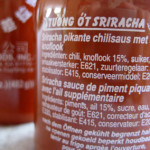 Sriracha: A HistoryÂ
Sriracha: A HistoryÂ
Sriracha is a cultural mashup that typifies American cuisine: based on a Thai sauce, it was created by a Vietnamese immigrant of Chinese descent, and is made outside of LA with California-grown ingredients. In 20 years, it’s crossed over from a condiment for Pho to a mainstream American ingredient.
Historic Gatronomist Sarah Lohman has traveled to Sriracha’s California birthplace to see the factory and interview David Tran, the hot sauce’s genius creator. She’ll share with you we’ll the fascinating history of Sriracha as well exclusive interviews, primary source research, and a special peek into its artisinal production process. All your burning hot sauce questions will be answered as we explore how Sriracha has become more American than apple pie.
Each ticket includes a small beer from the selection on tap made by Threes Brewing, gratuity included.
Doors will open at 6pm, with the talk beginning around 6:20pm. Be sure to grab your drink before then! 21+
***
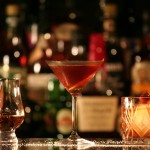 The Brooklyn Cocktail: A HistoryÂ
The Brooklyn Cocktail: A HistoryÂ
Thursday, Feb 11, 7pm
The Brooklyn Historical Society
$12
With distilleries blossoming throughout the borough and some of the world’s top mixologists calling Brooklyn home, Brooklyn has quickly become the epicenter of creative drinkmaking. Is this a new phenomenon, or have we had an earlier incarnation as the cocktail capital? Discover stories of Brooklyn bartenders past and present in a panel moderated by historic gastronomist Sarah Lohman, with cocktail historian David Wondrich; St. John Frizell of Fort Defiance, Del Pedro of Tooker Alley, and Tom Macy of Clover Club. Tastings included!
***
 Masters of Social Gastronomy: The Flavor Battles!
Masters of Social Gastronomy: The Flavor Battles!
Thursday, Feb 25th 6pm
MOFAD Lab
$12
MSG takes on on the history and science of imitation ingredients! There’ll even be a sample-heavy showdown where you get to definitively decide if there’s any difference between artificial and natural flavorings.
Sarah will explore the history of artificial food, starting with medieval feasts obsessed with disgusting foods like “meat pitchers.†After a trip to the 19th century to explore the earliest artificial flavorings, we’ll visit the “Poison Squad,†a team of early 20th-century chemists who tested the safety of food additives by ingesting them in large quantities.
Soma will open up the science behind artificial flavorings, tracking the back-room work of flavor chemists. Find out what notebook paper has in common with vanilla ice cream, and uncover the secrets of Juicy Fruit gum. We’ll bring it all back home by examining the NYC’s very own maple-syrup-scent mystery, and Soma’s attempts to recreate it in his kitchen.
Then, during the Storytime interlude, natural and artificial flavors will square off. Sarah and Soma will state the case for two sets of flavorings, and the audience will do a blind taste test to decide which ones reign supreme.
***
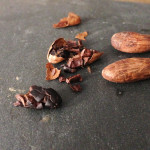 Cocoa in the City: NYC Chocolate Makers
Cocoa in the City: NYC Chocolate Makers
Thursday, Dec 10, 7 pm
$12/$8 for BHS and G-W membersÂ
Reserve Tickets
Brooklyn Historical Society, 128 Pierrepont St, Brooklyn, NY 11201
Historic gastronomist Sarah Lohman returns to BHS, this time to explore the history and intricate production process behind everyone’s favorite treat: chocolate. With a panel of chocolate makers, from bean to bar producers to confectioners of fine chocolates, discover the origin story behind some of your favorite chocolate bars and mouth-watering truffles. Tastings included!
 Masters of Social Gastronomy:Â Foods that go Bump in the Night
Masters of Social Gastronomy:Â Foods that go Bump in the Night
Tuesday, October 20th. Doors at 7:30pm, talks start at 8pm
FREE FREE FREE, 21+Â RSVP
Littlefield, 622 Degraw Street in Gowanus
Learn all about the fascinating connection between monster myths and culinary history, a rye fungus that caused mass hallucinations (and may have led to the Salem Witch Trials!), and famous cannibals from around the world. Get your ticket here!
***
 Gin History at LIM Alive @Five
Gin History at LIM Alive @Five
Friday, October 23rd, 5pm
$15 at the door
The Long Island Museum, 1200 NY-25A, Stony Brook, NY
Experience the LIM after hours. Join us for drinks, light refreshments, and a special program. Admission is $15; $10 for members at the door.
Join historic gastronomist Sarah Lohman as she explores the history of gin and why it was the alcohol of choice during prohibition. Ms. Lohman will discuss gin’s current day revival and enjoy an opportunity to see and smell the botanicals that create gin’s distinctive flavor profile. Â With cocktails!
***
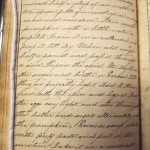 Brooklyn Bounty
Brooklyn Bounty
Tuesday, November 10th 7pm
Tickets
26 Bridge, DUMBO
This year’s Brooklyn Bounty will feature curated tastings of a nineteenth century Dutch-American meal with a modern twist. Recipes will be inspired by one of BHS’s prized artifacts, Mrs. Lefferts’ Book. This handwritten recipe book, compiled by Maria Lott Lefferts (1786-1865) and her daughter Gertrude Lefferts Vanderbilt (1824-1902), showcases traditional Dutch dishes. The menu is curated by Historic Gastronomist Sarah Lohman and executed by some of Brooklyn’s best restaurants. Our festive special evening will include a live auction, music and more fun surprises! Cocktail attire encouraged.
***
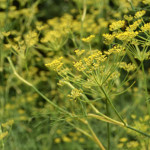 Herbal Alcohol Tour: Absinthe
Herbal Alcohol Tour: Absinthe
Saturday, August 1st 11am-12:15pm or 1:15-2:30
The Brooklyn Botanic Garden, 990 Washington Avenue
Members $18, non-members $20
Buy tickets here!
Learn the sordid history of this maligned alcohol, as well as its recent comeback, as we walk through the herb garden. You’ll get to see, smell and touch the plants that play a part in the creating the flavor of this herbal concoction. Then, you’ll get try absinthe from a local distiller served in a classic fashion.
***
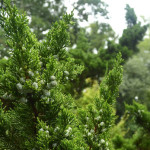 Herbal Alcohol Tour: Gin
Herbal Alcohol Tour: Gin
Saturday, August 8th 11am-12:15pm or 1:15-2:30
The Brooklyn Botanic Garden, 990 Washington Avenue
Members $18, non-members $20
Buy tickets here!
Learn about the history of gin while touring the BBG’s herb garden. You’ll see, smell and taste the plants that give gin its distinctive flavor, and learn why gin was such an important part of the recent distilling revival in Brooklyn. Then, we’ll head to the classroom, where we’ll sip a refreshing gin cocktail, with alcohol from a local distiller.
***
 Masters of Social Gastronomy: Floral Flavors at the BBG!
Masters of Social Gastronomy: Floral Flavors at the BBG!
Tuesday, July 28, 6:30pm-9pm
The Brooklyn Botanic Garden, 990 Washington Avenue
21+, each ticket also includes access to the Garden and one drink. A cash bar will also be available.
$12 for BBG members, $15 non-members.
Join the Masters of Social Gastronomy for a very special after-hours lecture at the Brooklyn Botanic Garden!
The same scents that fill our gardens and perk up our perfumes have a long and storied history as part of the human palate!
We’ll explore the long tradition of floral foods, including medieval custards scented withjasmine, early ice cream flavored with violet, and American apple pie perfumed withrosewater. Unravel the science behind their unique tastes and find out what exactly makes those flavors blossom.
We’ll also examine the secrets of saffron, the world’s most expensive spice. A tiny sliver of flower from the Middle East, saffron fetches hundreds of dollars per ounce. We’ll examine the labor-intensive harvesting process that contributes to the high prices and the cheap knock-offs that pollute the market, picking apart both old wives tales and scientific claims along the way.
***
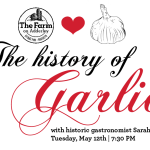 The History of Garlic: A Special Dinner at the Farm on Adderley
The History of Garlic: A Special Dinner at the Farm on Adderley
Tuesday, May 12th, 7:30 PM
$60 / person (+ beverages, tax & gratuity)
Sold out! To get on the wait list, send an e-mail to thefarmonadderleyevents@gmail.comÂ
Americans are fanatical about garlic. Not just as food, but as an alternative-medicine cure-all. Our contemporary love of garlic is an irony considering that through much of garlic’s history its taste was considered repulsive. Not simply repulsive, but un-American. “Real†Americans a century ago, viewed Italian immigrants’ love of garlic as a manifestation of their resistance to American culture. This beloved bulb was condemned and marginalized.
Join us for a five-course dinner hosted by historic gastronomist Sarah Lohman. We will eat garlic-focussed foods from our kitchen and dive into how garlic became a flavor so desirable that it managed to transcend xenophobia and became the most widely used flavor in American cooking.
***
 Distilling Brooklyn
Distilling Brooklyn
Thursday, May 14th
Doors open 6:30pm. Event begins at 7pm.Â
@ The Brooklyn Historical Society, 128 Pierrepont St, Brooklyn, NY
$12 General Admission / $8 for BHS and G-W Members
Three of Brooklyn’s top distilleries share their personal distilling histories and look at the vibrant (and sometimes violent) history of distilling in Brooklyn. Moderated by historic gastronomist Sarah Lohman, tastings will be offered from the esteemed participants, Kings County Distillery, New York Distilling Co., Van Brunt Stillhouse, and Brooklyn Gin.
Presented in partnership with the Brooklyn Brainery.
***
Umami: A Yummy Tour of Little Tokyo
Saturday, April 11th 12pm or 2:30pm
$30
This price of this tour includes four tastings!
Learn to eat in the neighborhood where New York and Tokyo meet.
In the past decade, the East Village has transformed from a post-punk wasteland to an east-coast outpost of Japanese culture. From noodles to squid, bubble tea to curry, we’ll explore all the internationally influenced food Little Tokyo has to offer.
Which fast food chains have their only American outposts in Little Tokyo? What’s the difference between traditional and modern Japanese desserts? What are the three primary flavors of Japanese street food? The answers to these questions and more as you learn to eat in the neighborhood where New York and Tokyo meet.
This price of this tour includes four tastings! We’ll meet in Manhattan, at the public park/benches on the northwest corner of St. Marks and 3rd Avenue, across from Cooper Union. The tour is 90 minutes long. Buy tickets here!
***
 At the Kids’ Table: How the Kitchen has Changed
At the Kids’ Table: How the Kitchen has Changed
Saturday, April 25, 2-4pm
The New York Historical Society
$16 per person ($10 per Member). Â Tickets.
What does eighteenth-century Tupperware look like? How about a nineteenth-century toaster? In this program, you’ll go on a family scavenger hunt in the New-York Historical Society to uncover the kitchens of the past. Then everyone will cook together, making cinnamon toast like folks would have 200 years ago—we’ll do everything from SCRATCH, grinding sugar and churning butter by hand. You’ll find out how much the kitchen has changed from 1815 to 2015!
ABOUT AT THE KIDS’ TABLE
This is a series of three  family programs on New York City’s food history. Each two-hour program allows participants to experience historic foodways through an exploration of kitchen objects based on the New-York Historical Society’s collection and cooking.
Buy tickets here!
***

Masters of Social Gastronomy:Â The World’s Oddest Foods
Wednesday, March 25th. Doors at 7:30pm, talks start at 8pm
FREE FREE FREE, 21+Â RSVP
Littlefield, 622 Degraw Street in Gowanus
Each month, the Masters of Social Gastronomy (Sarah of Four Pounds Flour and the Brainery’s Soma) take on the history and science behind some of your favorite edibles. Up this month: the world’s strangest (and most expensive) edibles.
One man’s delicacy is another man’s nightmare! Uncover the oddball background of the world’s priciest coffee, and what a jungle cat has to do with your mild roast. If mammals sound passé, you might try bird’s nest soup, a Chinese delicacy that’s anything but a cluster of twigs.
Mankind has always loved strong scents and powerful flavors, but sometimes goes to questionable lengths to obtain them. Flavoring from a deer’s butt, anyone? Or the almost-mythical ambergris, a mass of squid beaks and fecal matter from inside a whale’s intestines, considered one of the most valuable substances by the ounce on the planet? Hear harrowing tales of aromatic animal extracts, in high demand as dessert flavorings from the medieval era through the 19th century. RSVP HERE
**
 At the Kids’ Table: Chinese Food, American Story
At the Kids’ Table: Chinese Food, American Story
Saturday, April 25th, 2-4pm
The New York Historical Society
$16 per person ($10 per Member). Â Tickets.
Like it has for many immigrant groups, food created a pathway to acceptance for Chinese in America. During this program families will explore N-YHS’s groundbreaking exhibition Chinese American: Exclusion/Inclusion and will then cook some of the first foods that Chinese immigrants introduced to Americans. We’ll recreate the first popular Chinese take-out, chop suey, from a century old recipe, and make dumplings by hand- filling, folding, and cooking them to eat in class.
ABOUT AT THE KIDS’ TABLE
This is a series of three  family programs on New York City’s food history. Each two-hour program allows participants to experience historic foodways through an exploration of kitchen objects based on the New-York Historical Society’s collection and cooking.
Buy tickets here!
***
Masters of Social Gastronomy: Romance and Revenge, the History of Aphrodisiacs and Poisons
Wednesday, January 28th.
FREE FREE FREE, 21+Â RSVP
Doors at 7:30pm, talks start at 8pm
Littlefield, 622 Degraw Street in Gowanus
The  Masters of Social Gastronomy take on curious food topics and break down the history, science, and stories behind them. This month, we’re getting reading for Valentine’s Day!
Every culture has a long history of aphrodisiacs – love-inducing and libido-promoting foods, ranging from the commonplace to the esoteric. Is chocolate the rightful king of Valentines Day, or could we do better with a tiger’s unmentionables? Let’s trace the history of these foxy foods and see what science has to say about their amorous assertions.
First comes loves, then comes marriage, then comes a little bit of rat poison in their coffee cup. When love goes wrong, out comes the Victorian obsession with female poisoners: delicate and seductive, these ladies made headlines in the age of yellow journalism for offing their lovers with poisoned food. Come hear their stories and…hey, does this taste like almonds to you? RSVP HERE.
***
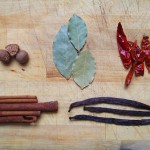 Edible Tour of the Tropical Pavilion
Edible Tour of the Tropical Pavilion
December 6, 2014; 11am or 1pm
The Brooklyn Botanical Garden,
$12, Tickets
Enjoy the warmth of our Tropical Pavilion on this edible greenhouse tour! We’ll explore the flavors used in holiday cooking and baking-like vanilla, black pepper, and chocolate-as well as coffee and kola. We’ll use sight, smell, and taste to experience these ingredients in their natural form and learn all about their history and usage.
***
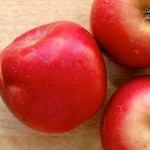 Masters of Social Gastronomy:Â PIE!!!!!!!!!!!!!!!!!!!!!
Masters of Social Gastronomy:Â PIE!!!!!!!!!!!!!!!!!!!!!
Wednesday, November 19th
FREE FREE FREE, 21+Â RSVP
Doors at 7:30pm, talks start at 8pm
Littlefield, 622 Degraw Street in Gowanus
Each month, the Masters of Social Gastronomy take on a curious food topic and break down the history, science, and stories behind it. Don’t miss the twin pillars of the American pie kingdom: the gentle apple pie and its heavily-spiced cousin, pumpkin pie.
Think making an apple pie is simple? Not so fast! A trip to the grocery store yields a thousand and one varieties of apples, all bearing well-marketed and uninformative monikers: Gala, Northern Spy, Empire, Honeycrisp, Granny Smith. Learn the rhyme and reason behind the names and the categories, along with the history and science that got turned us into a nation of Red Delicious. We’ll uncover the magic each cultivar brings to the dinner table, and how to be sure you’re baking the best in your apple pie.
Fall also brings everyone’s favorite time of year: pumpkin spice season! We’ll learn about the all-American pumpkin pie, and discover how this New World gourd combined with English pie ingenuity to become the classic Thanksgiving dish. Then, we’ll see how the pumpkin spice craze started and learn more about the complicated spices and crazy chemistry that make up this unique autumn flavor.
RSVP:Â http://www.eventbrite.com/e/masters-of-social-gastronomy-presents-all-american-pie-tickets-13465083427
—
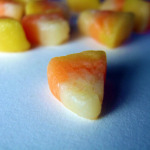 Candy: From Early History to Halloween
Candy: From Early History to Halloween
Wednesday, October 29th, Â 6:30-8pm
Brooklyn Brainery, 190 Underhill Ave. Prospect Heights, Brooklyn
$16 Tickets Available Here!
Isn’t it weird that one day a year it’s appropriate to threaten people into giving you candy? Where did the Halloween tradition come from? And actually, how did we come up with candy in the first place?
In this class, we’ll cover a brief world history of candy, from the botanic roots of sugarcane, to the first processed confections from the Middle East, to the magical candy medicines of medieval Europe. Then, we’ll sort out the origins of Halloween, along with modern myths like the “razor blade in the apple.”
And, what would a talk on candy be without lots and lots of CANDY: historic candy samples will abound to help you learn.
—
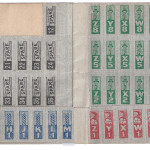 Sorry, No Sugar Today
Sorry, No Sugar Today
Sunday, September 28th, 2pm
The Long Island Museum, 1200 Route 25A Stony Brook, NY 11790
Free with museum admission.
Have you ever wondered what rationing during WWII was really like? Promoted as the ultimate patriotic duty for those on the home front, it also represented one of the real drudgeries of the War. Food historian Sarah Lohman explores the challenges that Americans faced throughout WWII as a result of wartime rationing and recreates some favorite wartime recipes to demonstrate necessary ingredient substitutions. She’ll use real ration books from the time, as well as period newspaper articles to explore the ins and outs of the ration system and explain the reasoning behind it. You’ll get to try two types of cakes, a decadent recipe that would have used several months of ration books, and another, frugal recipe that made many substitutions and used few ration points. You can decide which one is best at this fun, hands-on talk.
***
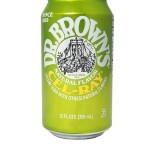 Masters of Social Gastronomy:Â Caffeine, Cocaine, and the Soda of a Nation
Masters of Social Gastronomy:Â Caffeine, Cocaine, and the Soda of a Nation
Tuesday, August 26
FREE FREE FREE, 21+Â RSVP
Doors at 7:30pm, talks start at 8pm
Littlefield, 622 Degraw Street in Gowanus
 Each month, our Masters of Social Gastronomy lectures bring you the history and science behind your favorite foods. Up this month: soda
Caffeine, cocaine, and a little bit of fizz were all it took to hook America on a brand-new beverage. We’ll dissect Coca-Cola’s namesakes, exploring the now-illicit ‘Coca’ and the Africa-sourced ‘Cola’. What joined these two bitter, unappealing flavors into the most iconic of soda flavorings?
But don’t forget the runners-up – second-tier drinks, represent! Learn the strange journey ofsarsaparilla, and how the drink of choice for archetypal Western cowboys found a second life halfway across the world. Discover the government plot to steal root beer away from Americans, and the corporate conspiracies that swirl around the failure of New Coke.
And, of course, we’ll take a look at New York City’s very own fizzy drink – the mysteriously-flavored Dr. Brown’s Cel-ray!
****
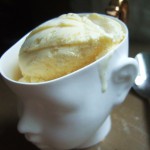 Masters of Social Gastronomy: The Mysteries of ICE CREAM
Masters of Social Gastronomy: The Mysteries of ICE CREAM
Tuesday, April 29
FREE FREE FREE, 21+Â RSVP
Doors at 7:30pm, talks start at 8pm
Littlefield, 622 Degraw Street in Gowanus
Hear the tale of vanilla ice cream, a commonplace flavor with a rare and exotic past. We’ll take a hard look at the science that makes ice cream tick and see if we can harness the DIY spirit to craft up astronaut ice cream in your very own kitchen.The wide range of curious flavors will be on full display, with 19th-century artichoke-and-tomato ice cream and other adventuresome (and masochistic) creations.
***
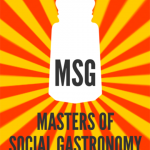
The Masters of Social Gastronomy Get Barbecued
Tuesday, September 24th, 6:30-8:30pm
@ the Brooklyn Kitchen
Get tickets here!
Every month, our MSG lectures take on the history and science behind some of your favorite foods. Up this month: barbecue.
Have you ever wondered where the tradition of slow cooking generous hunks of fatty meat came from? From its roots in Spanish barbacoa, to massive Southern meat pits and the modern day backyard cook out, we’ll track the barbecue’s history.
Then, Soma will tackle the fiercely regional world of barbecue, from the sauces of the Carolinas to Austin’s brisket battles. We’ll look at some of the most fiery fights of the day: pork versus beef, spicy versus sweet, and the blasphemy of the Texas crutch, sharing DIY tips along the way.
***
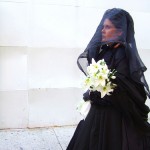 Food of the Dead: A Culinary History of the Funeral
Food of the Dead: A Culinary History of the Funeral
Thursday, October 17th, 6:30-8pm or 8:30-10pm
@ the Brooklyn Brainery
Sign up here!
At the end of an early American funeral, participants were given a cookie: spiced with caraway, and stamped with a special design, they were often kept for years as a memento of the departed.
Although mourning traditions have changed over time, and vary from place to place, what they have in common is food and drink.  In this talk we’ll look at the culinary traditions surrounding funerals throughout American history, and we’ll taste beer from Midas’s tomb, funeral cakes, and Mormon funeral potatoes.
***
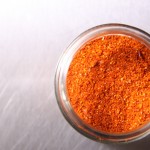
Chili Powder: A History
Thursday, July 25th, 6:30 PM
@ the Brooklyn Brainery
$18 Buy Tickets Here
What was chili’s path from a local dish of the Southwest to an easy weeknight meal for millions of Americans? There was an era when black pepper was considered spicy; but today, we make ourselves sweat with the hottest chili pepper blends. Why? Can science offer an explanation for our obsession with heat?
From traditional spices to national chili cook-offs, we’ll discover how the distribution of commercialized chili powder affected our eating habits and how it fits into our national pantry.
We’ll look at the roots of chili in Mexican cuisine, as well as the “Chili Queens†of San Antonio. We’ll learn how chili made its national debut at the 1893 world’s fair, and how this Tex Mex dish became a part of Americana from Washington DC to Cincinnati to Texas.
This class will include a tasting of chili cooked from a recipe in the first Mexican-American cookbook published in 1908. Buy tickets here
***
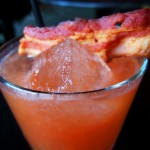 Masters of Social Gatronomy do COCKTAILS
Masters of Social Gatronomy do COCKTAILS
Monday, July 29th, 6:30 PM
@ the Brooklyn Kitchen
$5 gets you admission, two free beers and 10% off purchases at the Kitchen. Buy tickets here!
Each month, Sarah and Soma take on a curious food topic and break down the history, science, and stories behind it. Up this month: **cocktails!**
The cocktail is credited as one of America’s greatest inventions. But where did it come from, and how did it evolve into the endless combinations we find today? Sarah will examine the dawn of the cocktail and trace the origins of some of our country’s most beloved imbibements. You’ll walk away with a new appreciation for the drinks that got your ancestors drunk.
Soma will tackle our modern-day obsession with the cocktail. Rules will be broken and assumptions shattered: water vs whiskey, shaken vs stirred, and the One True Way to craft a martini! Find out how egg whites got from your breakfast plate to your highball glass, and whether baseball sized ice cubes make your drinks a sure home run.
BIG IMPORTANT NOTE!: MSG mooooving on over to Brooklyn Kitchen this month, where your $5 admission will get you 2 drink tickets and 10% off anything your heart desires. Doors at 6:30, talks shortly thereafter! Awesome? Yes. You can buy tickets at the door but there is a limited capacity; buy in advance here.
***
 Masters of Social Gastronomy is Sweet on You
Masters of Social Gastronomy is Sweet on You
Tuesday, April 30th, doors at 7pm
Public Assembly (70 North 6th Street)
Free, but RSVP recommended  So we can bring enough samples!
Come on down to Public Assembly in Williamsburg on Tuesday, April 30, for our monthly Masters of Social Gastronomy lecture. This month we’re talking about **sugar and artificial sweeteners**.
If you’ve ever crossed the Williamsburg Bridge, then you’ve surely noticed the towering structures of the defunct Domino’s Sugar factory. Â In this month’s MSG we’ll explore Brooklyn in an era when sugar was king, as well as take a behind-the-scenes peek at its modern day inheritor Sweet n’ Low.
But is giving in to our sweet tooth digging our own graves? Let’s break down the science behind the fear of sugar, from carcinogenic artificial sweeteners to the possible perils of that ubiquitous high fructose corn syrup.
MSG is free! Doors at 7, talks shortly thereafter, bring an ID with you. Please RSVPÂ HEREÂ so we know how many sweet samples to bring!
***
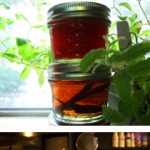
Bitters, Infusions, and Simple Syrups:Â A Custom Cocktail Workshop
Wednesday, April 10, 6pm
@Â The New York Horticultural Society
Tickets $50
Join us as Sarah Lohman teaches us how to recreate those ever-so-delicious cocktails that you thought only a trained “mixologist†could create. Learn how to infuse liquors with herbs and spices using historic recipes as inspiration, and concoct herbal cocktails with flavored simple syrups and fresh ingredients. She’ll also discuss how to use cocktail bitters—as well as their fascinating history—and you’ll make your own bitters from scratch. You’ll learn how to make your own botanically inspired cocktails with a hands-on demo. We’ll enjoy a cocktail in class and you’ll get to take home a sample of your own cocktail bitters.
***

Masters of Social Gastronomy: Illicit Substances
Tuesday, March 26, doors at 7pm
Public Assembly (70 North 6th Street)
Free
At this month’s Masters of Social Gastronomy, we’ll look at the culinary world’s experiments with illicit substances.Â
Let’s get high with the Victorians! From patent medicines to absinthe, Coca-Cola to laughing gas, we’ll look at all the forms of socially acceptable substance abuse during the 19th century.
Later, we’ll fast-forward to modern-day America, where quasi-legal marijuana has spawned an industry of cannabis edibles. We’ll survey the range of altered-state culinary concoctions and see what both science and chefs have to say about epicurean euphoria.
For Storytime, we’ll explore the 1971 cookbook “Supermother’s Cooking with Grass,†and this mama’s not using lawn clippings. For those preferring to stay on the good side of the law, we’ll also see if vodka sauce can make some seriously drunken noodles.
***
Vanilla: A History
Thursday, March 28th @ 6:30 – 8:00pm or 8:30 – 10:00pm
Brooklyn Brainery, 190 Underhill Ave. Prospect Heights, Brooklyn
$15
America’s most popular ice cream flavor has only been in use for the last 200 years. Where did vanilla come from, and what came before it? Let’s learn and taste our way through its history. In this class:
-Learn the history of vanilla and its culinary uses
-See how vanilla is farmed and processed
–Taste three different regional vanillas and one “pre-vanillaâ€flavor.
All in all, you’ll be filled with facts you can bust out at your next dinner party and dazzle your friends, as well as make better informed choices when using vanilla in your kitchen.
***
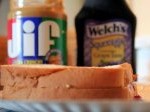
The Masters of Social Gastronomy Love Sandwiches!
Tuesday, February 26th, 7pm
Public Assembly (70 North 6th Street) in Williamsburg
FREE! But Please RSVPÂ HERE
The history of sandwiches is laced with vice, ingenuity, and industry.
Sarah will relate this sordid tale via the PB&J, perhaps the sandwich Americans feel the most passionate about. But jelly wasn’t always thought to be peanut butter’s natural companion and at MSG you’ll get to experience long-forgotten peanut butter sandwiches of the past.
Later, Soma will take us on a tour of America’s best sandwiches, from national standbys like the BLT to regional treasures like the Po’ Boy. He’ll go to bat for thegrilled cheese as the greatest sandwich of all time, and use the power of experimentation to uncover the Perfect Grilled Cheese.
During Storytime, former-Sandwich-Artist Soma will spill the beans on Subway’s secrets, because we know you’ve always wondered what exactly that “Subway smell” is. Afterward, they’ll put on their brave faces while tasting the most bizarre and innovative sandwich combinations history has to offer.
RSVPÂ HERE. So we know how many free samples to bring.
***
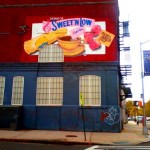 The Pearl Harbor Sandwich: Food at the Brooklyn Navy Yard
The Pearl Harbor Sandwich: Food at the Brooklyn Navy YardThursday, February 28th, 7pm
The Brooklyn Historical Society 128 Pierrepont Street  Brooklyn, NY
Tickets available here!The Navy Yard has long been one of the most mysterious and exclusive parts of Brooklyn: from the hollow, watchful windows of the houses on Admiral’s Row, to the secure-locked gates of the modern industrial parks.  In this talk, you’ll get a backstage pass to some of the secrets of the Navy Yard, using food as lens to understand the yard’s history and its future.  A modern grocery store will soon replace the mansions, and the locked gates lead to the largest roof top garden in the country.  Where did the sailors who occupied this space eat their dinners a century ago, and where do the artists go to snack today?  Food is rooted to the past of the Navy Yard, and it is also a symbol of its regrowth.  Snacks will be provided!
***
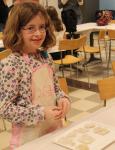 At the Kids’ Table: Victory Gardens!
At the Kids’ Table: Victory Gardens!
Saturday, March 2nd, 2-4pm
The New York Historical Society
RSVP required at familyprograms@nyhistory.org; $10 materials fee
During WWII, families were encouraged to grown their own food to free up more of the food supply for the troops. Â In this workshop, kids will join in for this wartime challenge by planting their own windowsill Victory Garden of spinach and tomatoes and learnhow to use their vegetables to cook a delicious 1940s dish.
ABOUT AT THE KIDS’ TABLE
This is a series of three  family programs on New York City’s food history. Each two-hour program allows participants to experience historic foodways through an exploration of kitchen objects based on the New-York Historical Society’s collection and cooking.
***
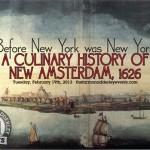
Before New York Was New York: A Culinary History of New Amsterdam
Tuesday, February 19th, 7:30 PM
@ The Farm on Adderley, 1108 Cortelyou Road, Brooklyn
$60 (+ beverages, tax & gratuity)
To sign-up, send an e-mail to thefarmonadderleyevents@gmail.com.
The Farm on Adderley is thrilled to welcome ‘historic gastronomist’ Sarah Lohman to host a meal inspired by what people were eating in New York in the 1600s and the lasting influence of Dutch tastes. The meal will be inspired by a cookbook compiled by the Lefferts family, who had a stronghold on land in the Flatbush (“Vlacke Bosâ€) area of Brooklyn.
To sign-up, send an e-mail to thefarmonadderleyevents@gmail.com.
***
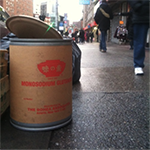
MSG does MSG!
Tuesday, January 29, 7pm
Public Assembly (70 North 6th Street) in Williamsburg
To celebrate its one year anniversary, this month’s Masters of Social Gastronomy takes on its namesake: monosodium glutamate (MSG)! Savory spice or fatal flavor?
Sarah Lohman of Four Pounds Flour will track MSG back to its source intraditional Japanese food, showing how time and money can turned an innocuous plant into the darling of mass production
Soma will take on modern-day interpretations of MSG, from its role in “Chinese Restaurant Syndrome” to its many relatives hiding ineveryday foods. Science fact will be separated from science fiction as myths are deflated and truths laid bare.
While Sarah crafts organic MSG from scratch, Soma will bend science to his iron will and produce factory-farm MSG in his very own kitchen.
***
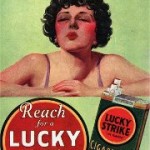 The Masters of Social Gastronomy Cut the Fat
The Masters of Social Gastronomy Cut the Fat
@ Public Assembly, Williamsburg, Brooklyn
FREE (but please RSVP here so we bring enough samples)
For every supposedly innovative weight loss fad, there is a century-old counterpart. From low-carb diets to extreme mastication, calorie counting to calisthenics, Sarah will reveal the radicals and pseudo-scientists that invented America’s favorite dieting trends.
Soma will pull back the curtain on the dieting industry, from the shadowy producers of diet pillsto our dear frozen friends at Healthy Choice. See what happens when Budweiser battles South Beach, and how marketing muscle can be found in an IBM computer from the 60’s. Featuring kickbacks, intrigue and many many cigarettes.
At Storytime, we’ll figure out whether tapeworm diets, negative calories and other crazy ideas are fact or fiction.
***
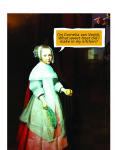 CORNELIA VAN VARICK’S HOLIDAY KITCHEN
CORNELIA VAN VARICK’S HOLIDAY KITCHEN
Saturday, December 1st 2-4 pm
The New York Historical Society
RSVP required at familyprograms@nyhistory.org; $10 materials fee
Dutch families in New Amsterdam were known for their delicious holiday confections—can you imagine all the good smells that would have come out of their kitchens?
During this program, participants will take the place of Cornelia van Varick in her seventeenth-century kitchen as she prepares traditional food for the New Year. We’ll handle objects and ingredients that Cornelia would have had, such as sugar cones and nippers, Dutch ovens, and mortar and pestles. Then we’ll use them to make two Dutch holiday treats, orange caraway cookies and fried doughnuts, that participants can taste and take home.
ABOUT AT THE KIDS’ TABLE
This is a series of three  family programs on New York City’s food history. Each two-hour program allows participants to experience historic foodways through an exploration of kitchen objects based on the New-York Historical Society’s collection and cooking. The first program focuses on seventeenth-century Dutch food traditions, the second on how kitchen tools have changed since the early nineteenth century, and the third on how food rationing affected families during WWII. Sign up for one or all programs in the series!
***
 Fifteen Cent Dinners - in part with the NYPL’s  Lunch Hour NYC
Fifteen Cent Dinners - in part with the NYPL’s  Lunch Hour NYC
Thursday, November 15, 5:30 PM
Morningside Heights Library – Community Room
2900 Broadway, NY NY
FREE
In 1877, Juliet Corson self-published a pamphlet entitled “15 Cent Dinners for Families of Six.†  What motivated Corson to publish this pamphlet and who were the families that needed to survive on $3 a week, about $50 in today’s money?  And what is it like to survive on a diet of organ meats, beans, and beef broth, totaling about 800 calories a day?
In this talk, we’ll look at Corson’s pamphlet, and talk about the effect it had on a population left destitute by a great depression.  I lived on her suggested diet for a week, and I’ll share my personal experience with her food and advice.  With tastings!
***

Extracts, Infusions and Bitters: Holiday Cooking and Baking
Sunday, November 11th, 10 am
@Â The Brooklyn Botanical GardenÂ
$43
Learn how to enliven your kitchen with the unique flavors of rich spices. This class begins with a tour of cooking spices found in the BBG greenhouses, along with a discussion about when and why they became popular in American cuisine. Back in the classroom, learn to make a variety of spice infused ingredients that compliment wintertime cooking and baking as well as tips and techniques for building layers of flavor in holiday dishes.  From infused oils to mulling spices to fruitcakes, we’ll learn how to make homemade holiday gifts for culinary enthusiasts. Participants will make a baking extract, filled with winter flavors, to take home.
***
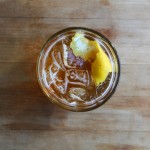 Extracts, Infusions and Bitters: Winter Cocktails
Extracts, Infusions and Bitters: Winter Cocktails
Sunday, November 11th, 1pm or 4pm
@Â The Brooklyn Botanical GardenÂ
$43
When the weather turns cold, the best way to warm up is with a spicy, warm winter cocktail . First we’ll take a tour of the BBG greenhouses for a tutorial on great cocktail ingredients: coffee, vanilla, and other spices in their natural state—as well as their place in cocktail history.  Then we’ll head into the classroom to learn how to infuse liquors with herbs and spices, concoct warm, winter cocktails, and make your own bitters from scratch. We’ll learn to layer flavor, and how to make great holiday cocktails on the fly. The class includes hands-on demos, an in-class cocktail, and a take-away sample of your own, home-made cocktail bitters.
***
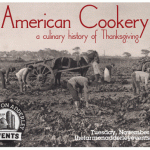 American Cookery: A Culinary History of Thanksgiving Dinner
American Cookery: A Culinary History of Thanksgiving Dinner
Tuesday, November 13th 7:30 PM
@ The Farm on Adderley, 1108 Cortelyou Road, Brooklyn
$60/person (+ tax & gratuity)
The Farm on Adderley is thrilled to welcome ‘historic gastronomist’ Sarah Lohman to host a meal inspired by the culinary traditions behind America’s favorite holiday. From gravy to green bean casserole, mashed potatoes to pumpkin pie, Sarah will trace our most-loved foods back to their original recipes and shed light on how the traditions we know and love came to be.
***
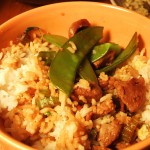 Chinatown and Chop Suey - in part with the NYPL’s Lunch Hour NYC
Chinatown and Chop Suey - in part with the NYPL’s Lunch Hour NYC
Saturday, November 3, 10:30 AM
Seward Park Library
192 East Broadway, NY NY
FREE
Chinatown and its cuisine have always been a lunchtime favorite. In this talk, we’ll chat dim sum and tea houses, the Jewish connection to Chinese food, and the history of Chinatown as a cheap lunch destination. Â Live demo (and tasting!) of a 19th century recipe for the “original” Chop Suey, featuring chicken livers and gizzards.
***
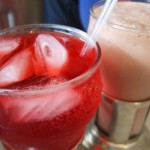
Saturday, October 13th at 1 PM
Inwood Library
4790 Broadway, NY NY
and
Saturday, October 20th at 2 PM
67th st Library
328 East 67 St. NY NY
FREE
The stories behind three fountain favorites: the egg cream, Dr. Brown’s Cel-Ray soda, and the Lime Rickey.  Will include a demo of how to mix each drink, as well as a tasting! This program is for families–bring the kids and learn together!
**
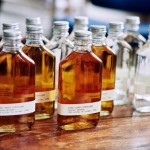 Brooklyn Boozehounds:  A History of Distilling in Kings County
Brooklyn Boozehounds:  A History of Distilling in Kings County
Thursday, October 11th, 7pm
The Brooklyn Historical Society 128 Pierrepont Street  Brooklyn, NY
Tickets are $10Whiskey Wars, Swill Milk, and Illicit Booze– the production of alcohol has long been tied to Brooklyn’s history, through commerce and controversy.  In this talk, we’ll wade our way through Brooklyn booze-soaked past, from the earliest applejack producers to the end of distilling during Prohibition.  But the story of liquor in King’s County has a happy ending, through a change in legislature, distilling has returned to Brooklyn.  Whiskey, gin, and vodka are all being bottled in the borough, and we’ll be talking about this new wave of distillers who have picked up the torch. Â
With samples from Kings County Distillery, Brooklyn Gin, and Van Brunt Stillhouse as well as a “free lunch” of farm fresh butter fromÂ
Saxelby Cheese and bread, cheese, and cold cuts fromÂ
Sahadi’s. Â
And tickets are only $10!
 Get you ticketsÂ
here!
***
 The Master of Social Gastronomy Get Shelved: Preservatives and Convenience Food
The Master of Social Gastronomy Get Shelved: Preservatives and Convenience Food
Tuesday, September 25th, 7pm
@ Public Assembly, Williamsburg, Brooklyn
FREE (but please RSVPÂ here!)
MSG is our FREE monthly food science and history lecture, and this time we’re talking all about convenience food!
It’s evil, right?
Well, you may change your tune after Sarah’s Ode to Convenience Food in Three Parts: How Convenience Food Won the Civil War; How Convenience Food Almost Killed Us at the Turn of the Century; and How Convenience Food Liberated the Modern Woman.
Sarah is fairly certain modern society was built on the back of Borden’s Sweetened Condensed Milk, and at MSG, you’ll find out why.
Why does your bacon clamor about its lack of nitrites, but your soda keeps quiet about sodium benzoate? Soma will unwrap our love/hate relationship with modern preservatives, and how keeping our food safe may or may not kill us in the end. Learn to read the small print of food labeling with terrifying ease!
***
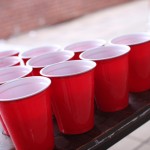 Masters of Social Gastronomy Get Tipsy
Masters of Social Gastronomy Get Tipsy
Public Assembly, 70 North 6th Street, Williamsburg
Tuesday, August 28, 7pm
Free, PLEASEÂ RSVP
Jonathan Soma  of the Brooklyn Brainery will unravel the science behind inebriation, from the moment it hits your lips to your next-day regrets. We’ll break down “beer before liquor,†red wine’s affection for hangovers, and other boozy old wives’ tales.
After Soma explains the whys of getting drunk, Sarah Lohman, author of Four Pounds Flour, will actually get you drunk! She’ll unveil the history of drinking games, from the Greeks flinging wine at each other in a game of skill, to the American practice of “toasting,†that instigated the prohibition movement. From Geisha Games to Ancient Rock, Paper, Scissors, you’ll be invited on stage to play and compete for fabulous prizes and free drinks!
***

Special Preview: Tenement Kitchens Tour
Monday, August 6 at 6:30 PM
The Lower East Side Tenement Museum, 97 Orchard St., New York, NY
Purchase tickets online HERE
For many Lower East Side women, feeding the family was a daily struggle. Scraping together what money was left after paying rent, tenement women scoured the markets in search of the best ingredients, while sharpening their wits haggling over prices. They made dinner in apartments without running water, electricity or refrigeration. Their meals show us how they preserved their heritage while adapting to a new land.
In this tour, you’ll see the apartments of three different 97 Orchard families with three different ethnic backgrounds: German, Sephardic, and Italian. You’ll learn the important role that the kitchen played as the heart of the home and you’ll get to see, smell, and finally taste the foods of the tenements. Â The tour will end with a sample of a unique Chinese-American dish.
***

Masters of Social Gastronomy: ICE CREAM!
Tuesday, July 24th, Doors at 7
Public Assembly, Brooklyn
FREE with FREE Samples
MSGÂ is our free monthly lecture series all about the history and science of food. Up this month:Â ice cream.Â
Sarah Lohman of Four Pounds Flour will unearth the stories behind our favorite ice cream treats and share some of history’s wildest bygone flavors–that may be due for a revival. By the end of the night, you’ll be able to answer questions like: which came first, chocolate or vanilla? The ice cream sandwich or the ice cream cone? Neapolitan or liquid nitrogen?
Meanwhile, Soma will show you the science behind making the perfect batch at home, and Big Ice Cream’s tricks for plumping up their profit margins. We’ll also track frozen desserts across the globe, from Italian gelato to dondurma, the magically stretchy ice cream from Turkey.
At the storytime halftime show, they’ll make ice cream right before your eyes, using an easy method you can replicate anytime, anywhere.
As always, MSG is free and takes place at Public Assembly (70 North 6th Street) in Williamsburg. Doors open at 7pm, with samples and drink specials all night long.
RSVP here! (so we know how much free ice cream to bring!)
***
 American Taste: Black Pepper
American Taste: Black Pepper
Wednesday, July 25th, 6:30-8
@ The Brooklyn Brainery
$12 Buy tickets here.
This is an all you ever need to know class about black pepper!
We’ll look at the history of this spice, and discover how it went from being as precious as gold to the ubiquitous plastic shaker on a diner table.
Then, we’ll track its production, from life on a vine in Sumatra to tri-color pepper in the spice aisle of Whole Foods.
And lastly, we’ll taste five varieties of pepper from different regions, discuss pepper recipes past and present, and analyze the flavor qualities of America’s favorite savory spice.  Buy tickets here!
***
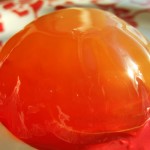
Masters of Social Gastronomy: Gelatin!
Tuesday, June 26th, 7pm
Public Assembly, 70 North 6th Street, Williamsburg
FREE! Free samples! Drink Specials!
Masters of Social Gastronomy (MSG) is a monthly lecture series all about the history and science behind some of your favorite, or not so favorite, foods. This month: gelatinous edibles of all sorts.
Sarah will discuss the origins of gelatinous desserts, starting long ago when jiggly delights were made with drippings from beef stew or extracts from the swimbladders of sturgeon. Then we’ll take on that modern wonder:Jell-O, exploring the greatest atrocities and wildest successes of the 20th century Jell-O mold, while figuring our why recipes for meat in lime Jell-O exist. From 19th-century “Punch Jelly,” to 20th-century “Jell-O Sea Dream with Shrimps” you will see gelatin both beautiful and horrible.
Meanwhile, Soma will untangle the science of gelatin and its kin, introducing a few lesser-known relatives along the way. How’d we get the wiggle in those jigglers? Find out where killer bacteria and Jell-O meet on the other side, and dive into the amazing world of edible dishware. Stretch the boundaries of reality through an introduction to counterfeit Chinese eggs and the fancy-pants world of molecular gastronomy.
As if that’s not enough, we’ll be joined by Michelle Zatta and Nadia Siddiqui, co-directors of the Jell-O Mold Design Competition, who will present the good, the bad, and the ugly of gelatin design, including tips on how to create a successful Jell-O mold.
***
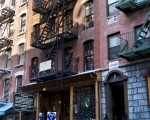 Tenement Talks Behind the Scenes: Goldie Lustgarten’s Kosher Butcher Shop and the Riot of 1902
Tenement Talks Behind the Scenes: Goldie Lustgarten’s Kosher Butcher Shop and the Riot of 1902
Tuesday, June 19th, 6:30 PM
The Lower East Side Tenement Museum
103 Orchard Street, New York, NY
FREE
Join historians Judith Rosenbaum from the Jewish Women’s Archives and Annie Polland as they discuss the impact of the Kosher Meat Boycott of 1902 on the city and our own 97 Orchard Street. Savor a tasting prepared by food historian Sarah Lohman.
***

Masters of Social Gastronomy: Fake Meat!
Tuesday, April 24, 7pm
Public Assembly, 70 North 6th Street, Williamsburg
FREE! RSVP HERE
Each month, MSG takes on a curious food topic and breaks down the history, science, and stories behind it. Accept no imitations, because on April 24th we’ll be talking FAKE MEAT.
Sarah Lohman of Four Pounds Flour will give you a run-down of vegetarianism in the west. From Benjamin Franklin’s “Tow-fu” to Dr. Kellogg’s commercial “Protose,” we’ll explore just how long we’ve been eating things that masquerade as meat.
Soma will be taking charge of all your favorite modern imitation meats, exploring the many faces of soy and revealing the not-so-secret fungi factories that power your favorite frauds. We’ll take a look at crafting mock duck and tempeh at home, as well as where to shop if your culinary prowess fails.
There’ll samples of historic fake meats so good you might be inspired to replace your veggie burger with some history food, along with drink specials from the always awesome Buffalo Trace Bourbon. RSVP HERE so we know how many free samples to bring!
***
 Buzzard Sunday
Buzzard Sunday
When: Sunday, March 18th, 11 am-4 pm
Where:Â Brooklyn Brainery, 515 Court St., Brooklyn, NY.
Tickets: $15, Get ’em Here
My hometown
 of Hinckley, Ohio is a small town with a bizarre holiday:Â
Buzzard Day. Every year, the buzzards come back on March 15, and the whole town celebrates with a giantÂ
pancake breakfast. This year, I’m teaming up with theÂ
Brookyln Brainery to bring Buzzard Sunday to Brooklyn. And while we might not have any buzzards here in NYC, we’ve certainly gotÂ
pancakes, lots of them, and aÂ
craft fair, and we’re gonna celebrate as best we can. Also a bean bag toss.Â
Get your tickets and read the whole gruesome legend behind the festival.Tickets are only $15!
***
Masters of Social Gastronomy: Candy!
Where:Public Assembly, 70 North 6th Street in Williamsburg
When: Tuesday, February 28sth.  Doors at 7
FREE with FREE SAMPLES
We’re kicking off a new bar room lecture series all about food!  Each month, Sarah Lohman of Four Pounds Flour and Jonathan Soma of the Brooklyn Brainery will take on a curious food topic and break down the history, science, and stories behind it.
Sarah will talk about ancient candies with a connection to the present day: from the first sweet treats in Asia to the development of confections like Halvah, we’ll explore the story of candy from pre-history to Marshmallow Peeps.
Meanwhile, Soma will unravel the science behind all your favorite niche candy and show you how to whip up cunning imitations at home. From the explosive power of Pop Rocks and the spicy burn of Atomic Fireballs to the sour rush of Warheads and the soothing coolness of Orbit gum – it’s chemistry vs candy!
***
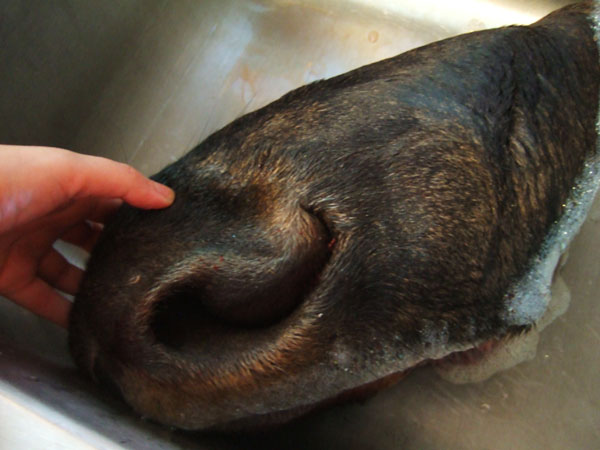
Masters of Social Gastronomy: Strange Meats!
Where: Public Assembly, 70 North 6th Street in Williamsburg
When:Â Tuesday, January 31st. Â Doors at 7
FREE
We’re kicking off a new bar room lecture series all about food!  Each month, Sarah Lohman of Four Pounds Flour and Jonathan Soma of the Brooklyn Brainery will take on a curious food topic and break down the history, science, and stories behind it.
This month’s topic is STRANGE MEAT! Sarah will recount her adventures eating beaver, bear and moose “mouffle,†along with the historic precedent for each. Soma will be taking on unusual meat preparations, from how to turn jerky into cotton candy to what to do with a pig’s head.
Word on the street is we might even have samples.
***
Pre-Industrial Dinner
Where:Â The Farm on Adderly,
When:Â Wednesday, January 25th, 2012Â 7:30 PM
Cost:Â $69 / person (beverages, tax & gratuity not included)
To sign-up, send an e-mail tothefarmonadderleyevents@gmail.com
Step back in time with us and imagine Brooklyn in the mid-1800s.  Farms flourished and Flatbush bustled as workers harvested crops in the neighborhoods we now call home. Join us at The Farm on Adderley for a meal inspired by the food eaten by the people who lived and worked on farms in the area. Refrigeration wasn’t yet available, so preservation techniques were the key to ensure food could be enjoyed all-year long.  Chef Tom Kearney is creating a four-course meal showcasing these practices and techniques. Our guest for the evening is ‘historic gastronomist’ Sarah Lohman, who will provide a historical context for the food we’re eating and how Brooklyn – and specifically Flatbush – fit into the larger network of farms and food distribution in New York in the 1800s.
***
Reducing Recipes: American Weight-Loss Trends
Where:Â The American Museum of Natural History, 200 Central Park West, New York, NY
When:Â Tuesday, January 24th 6:30 pm
Cost: $30 Buy Tickets Here.
What New Year’s resolution did you make this year? Millions of Americans will promise to shed a couple pounds in 2012; but when Americans start worrying about their waistlines to begin with? How did we count calories before we knew a calorie existed? How did faddish diets in the past change the way Americans ate forever?
Join Historic Gastronomist Sarah Lohman, author of the blog Four Pounds Flour, for a look at how Americans traditionally cleansed themselves of a few extra pounds. From William Banting’s “Letter on Corpulance,” to “Fletcherizing” with John Harvey Kellogg, we’ll explore “reducing” in all its forms, as well as taste some of the best (and worst) foods historic diet trends have to offer.  This program will be a 90 minute talk including a tasting of four different diet dishes. Buy ticketsÂ
here.
***
Cocktail Bitters: The Liquid Spice
6:30 pm – 8 pm @ The Brooklyn Brainery 515 Court St., Brooklyn, NY
$15
 This class includes everything you need to know about the world’s most popular cocktail ingredient—bitters!
This class includes everything you need to know about the world’s most popular cocktail ingredient—bitters!
— A history of bitters and their link to Victorian medicine. — A bitters tasting of three classic bitters, as well as three new, artisanal blends from Brooklyn Hemispherical Bitters. — A how-to demo to make bitters at home, as well as a taste of bitters made from a historic recipe. — A bitters-focused cocktail that’s easy and delicious. — A special sweet treat flavored with bitters.
Impress your friends and improve your cocktails by understanding this complex, versatile, and historic “liquid spice.” Sign up here.
***
The Grand Secret of Punch
8:30 pm – 10 pm @ The Brooklyn Brainery 515 Court St., Brooklyn, NY
$35
 This year, enliven your holiday party with a delicious, historic punch!
This year, enliven your holiday party with a delicious, historic punch!
Punch is a time-honored tradition in New York, past due for a revival. According to The Lights and Shadows of New York Life published 1873: â€Punch is seen in all its glory on [New Year’s] day, and each household strives to have the best of this article. There are regular punch-makers in the city, who reap a harvest at this time. Their services are engaged long before-hand, and they are kept busy all morning going from house to house, to make this beverage, which is no-where so palatable as in this city.â€
In this class, we’ll demo and drink, giving you the chance to make and taste three wintery punches. You’ll learn how to make Charles Dickens’ own recipe for an impressive, flaming-hot punch; we’ll discuss the safety concerns regarding eggnog and look at several contemporary and antiquated recipes; and we’ll try apple alcohol based cocktailsthat take advantage of holiday flavors and local ingredients.
Sign up to learn the time-tested secrets for perfectly delicious punch!
***
The Big Apple: Â Historic Cocktails with Regional Apple Alcohols
7:00 p.m. @ The Brooklyn Historical Society, 128 Pierrepont Street at Clinton Street Brooklyn, New York
Ticket: $30 BHS members/$40 non-members. Purchase your ticket here.
Apple cider, apple brandy, and applejack are complex alcohols that are infinitely mixable. We’re going inspire you to add them to your liquor cabinets with a night of nineteenth-century cocktails!
The evening will begin with a cup of Apple Punch, which features slices of crisp New York apples steeped in wine. While sipping drinks, guests will hear a short talk on the history of apple alcohol in New York. Afterward, participants will learn how to make three historic apple cocktails: the refreshing, spicy Jersey Cocktail; the warm and comforting Apple Toddy; and the sweet, meringue-like Tiger’s Milk Punch. These drinks will feature local apple alcohols made from traditional recipes. Participants will work with educators in small groups, learning about the history of each drink as they imbibe their handmade cocktails. Additionally, local apple alcohol producers will be on hand to talk about their products and the state of the apple industry today.
Generous donations have been made to this event by Revolution Cider, Warwick Valley Winery, and Cornelius Applejack.
This event is part of Glynwood’s Cider Week, which seeks to cultivate an appreciation for hard cider. Glynwood preserves apple orchards in the Hudson Valley by promoting the production of hard cider and apple spirits. Learn more atwww.glynwood.org.
This event is part of BHS’s Brooklyn Food Stories. Advanced ticket purchase recommended as the event will fill up. Ticket: $30 BHS members/$40 non-members. Purchase your ticket here.
***
Alice, or the Scottish Gravediggers: An Evening of Victorian Medicine and  Cocktail Bitters.
6pm-8pm @ The Old Stone House, 336 3rd Street, Brooklyn, NY
FREE
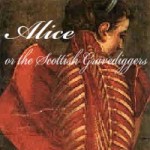 Polybe + Seats theater presents  a preview of Alice, or the Scottish Gravediggers in part with a bitters tasting withHistoric Gastronomist Sarah Lohman.
Polybe + Seats theater presents  a preview of Alice, or the Scottish Gravediggers in part with a bitters tasting withHistoric Gastronomist Sarah Lohman.
Premiering in late October, Alice is an 1829 melodrama about a penniless orphan who works as a maid in her aunt’s inn and is torn between two suitors. She subjects her body to mysterious experiments at a nearby medical school in exchange for treatment for her wounded beloved, a medical student himself.  At this event, you’ll get a preview of the play’s gothic set design, music, and art as well as a taste of how Victorian medicine begot the modern cocktail.
Arrive at six for a talk on the link between cocktail bitters and old fashioned medicine.  Afterwards, mix and mingle while sipping a bitters-focused cocktail, featuring Original Sin Hard Cider.  Then, attend a bitters tasting from local makers, and watch a demo on how to make your own bitters.
Attendees will receive a coupon for discounted admission to the premiere of Alice, or the Scottish Gravedigggers.
This event is part of Open House New York and the Historic House Trust Festival Weekend.
***
Sunday, September 25th
The Real Housewives of Henry St., 1905
3pm @ The Henry St. Settlement, 265 Henry St, New York, NY.
$19.05 Buy Tickets Here.
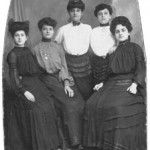 Please join us as Jane Ziegelman (author of 97 Orchard) explains how the housewives cooked in their primitive tenement kitchens, shopped at pushcart markets, and kept Old World traditions alive in their new homeland, while settlement houses sought to impart the food habits of mainstream America. Historic gastronomist (and star of William Grimes’ new show Appetite City) Sarah Lohman will speak about her three-day experiment keeping Kosher by following a daily menu from the Ellis Island Kosher kitchen. Historian Suzanne Wasserman (Director of the Gotham Center for New York City History) will show a film clip of the 1902 Kosher butcher boycott on the Lower East Side from her upcoming film Meat Hooked!
Please join us as Jane Ziegelman (author of 97 Orchard) explains how the housewives cooked in their primitive tenement kitchens, shopped at pushcart markets, and kept Old World traditions alive in their new homeland, while settlement houses sought to impart the food habits of mainstream America. Historic gastronomist (and star of William Grimes’ new show Appetite City) Sarah Lohman will speak about her three-day experiment keeping Kosher by following a daily menu from the Ellis Island Kosher kitchen. Historian Suzanne Wasserman (Director of the Gotham Center for New York City History) will show a film clip of the 1902 Kosher butcher boycott on the Lower East Side from her upcoming film Meat Hooked!
The event, held in Henry Street’s historic dining room, will include a strudel-making demonstration (audience participation invited!), refreshments like those enjoyed by the 1905 real housewives, and a signature cocktail made with Manischewitz wine. Buy Tickets Here.
***
Thursday, September 15th
Rewriting Recipes with Historic Gastronomist Sarah Lohman
7:00 p.m. @ The Brooklyn Historical Society, 128 Pierrepont Street at Clinton Street Brooklyn, New York
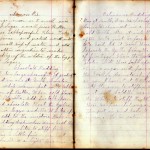 Perhaps you found a box of ancient handwritten recipes cards at the Brooklyn Flea. Maybe, you have your grandmother’s cookbook, gathering dust on the shelf. Or perhaps you simply enjoy browsing Google books to page through cookbooks from 100 years ago. Why aren’t you cooking from these recipes? These treasures from the past are valuable resources to draw inspiration for a contemporary kitchen. Sarah Lohman is here to help you negotiate the difficulties of translating historic recipes. In Rewriting Recipes, she’ll use BHS’s historic Lefferts Family cookbook to teach how to interpret historic recipes. Lohman will unveil tricks to modernize these recipes for today’s kitchen: how to interpret amounts, flesh out directions, and find comparable ingredients. Most importantly, she’ll show how to pull inspiration from these recipes to create unique contemporary dishes. Feel free to bring your own vintage and historical recipes to share.
Perhaps you found a box of ancient handwritten recipes cards at the Brooklyn Flea. Maybe, you have your grandmother’s cookbook, gathering dust on the shelf. Or perhaps you simply enjoy browsing Google books to page through cookbooks from 100 years ago. Why aren’t you cooking from these recipes? These treasures from the past are valuable resources to draw inspiration for a contemporary kitchen. Sarah Lohman is here to help you negotiate the difficulties of translating historic recipes. In Rewriting Recipes, she’ll use BHS’s historic Lefferts Family cookbook to teach how to interpret historic recipes. Lohman will unveil tricks to modernize these recipes for today’s kitchen: how to interpret amounts, flesh out directions, and find comparable ingredients. Most importantly, she’ll show how to pull inspiration from these recipes to create unique contemporary dishes. Feel free to bring your own vintage and historical recipes to share.
This event is part of BHS’s Brooklyn Food Stories. Advanced ticket purchase recommended as the event will fill up. Tickets: $8 BHS members/$10 non-members. Purchase your ticket here.
***
Sunday, September 4
Intro to Ice Cream Making
12-2:30pm or  3:30-6pm @ The Brooklyn Brainery 515 Court Street, Carroll Gardens, Brooklyn, NY
$30
Sign Up Here
 I won’t lie: buying an ice cream maker has been one of the best investments of my life. I am amazed at the endless joy it has brought me; and now, I want to share that joy with you.
I won’t lie: buying an ice cream maker has been one of the best investments of my life. I am amazed at the endless joy it has brought me; and now, I want to share that joy with you.
Join me to learn the simple steps of making homemade ice cream, from heating the custard to freezing the final product. We’ll chat about the history of ice cream in America as well as discuss the science of ice cream making. Finally, we’ll sample the delicious results of all our hard work. Sign up here!
***
Thursday, September 1
Timeline of Taste with Historic Gastronomist Sarah Lohman
7:00 p.m. @ The Brooklyn Historical Society, 128 Pierrepont Street at Clinton Street Brooklyn, New York
Tickets: $8 BHS members/$10 non-members. Purchase your ticket here.
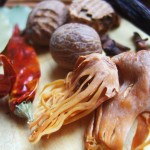 Have you ever noticed that the names of Greenpoint’s streets bring to mind exotic locales? From Java to India, these Brooklyn roadways took their names from the distant countries that brought spices from the Far East to America’s shores. Once a major port for trading ships, Greenpoint can be used as a guidebook to explore the history of American food through flavor. When did American palates favor one spice over another and why? When did ships stop bringing mace and start carrying vanilla beans?
Have you ever noticed that the names of Greenpoint’s streets bring to mind exotic locales? From Java to India, these Brooklyn roadways took their names from the distant countries that brought spices from the Far East to America’s shores. Once a major port for trading ships, Greenpoint can be used as a guidebook to explore the history of American food through flavor. When did American palates favor one spice over another and why? When did ships stop bringing mace and start carrying vanilla beans?
In A Timeline of Taste Sarah Lohman will take you on a journey from 1800-1950, making a pit stop every fifty years to explore the tastes of a particular time. You’ll get to smell and sample the spices, fruits, extracts, and other ingredients that defined the flavors of each time period. From rosewater to vanilla, nutmeg to cinnamon, citron to reddi-whip, SarahLohman will discuss why these flavors were popular and how they were used in day- to-day cooking.
This event is part of BHS’s Brooklyn Food Stories. Advanced ticket purchase recommended as the event will fill up. Tickets: $8 BHS members/$10 non-members. Purchase your ticket here.
***

Masters of Social Gastronomy: Gelatin!
Tuesday, June 26th, 7pm
Public Assembly, 70 North 6th Street, Williamsburg
FREE! Free samples! Drink Specials! RSVP HERE
Masters of Social Gastronomy (MSG) is a monthly lecture series all about the history and science behind some of your favorite, or not so favorite, foods. This month: gelatinous edibles of all sorts.
Sarah will discuss the origins of gelatinous desserts, starting long ago when jiggly delights were made with drippings from beef stew or extracts from the swimbladders of sturgeon. Then we’ll take on that modern wonder:Jell-O, exploring the greatest atrocities and wildest successes of the 20th century Jell-O mold, while figuring our why recipes for meat in lime Jell-O exist. From 19th-century “Punch Jelly,” to 20th-century “Jell-O Sea Dream with Shrimps” you will see gelatin both beautiful and horrible.
Meanwhile, Soma will untangle the science of gelatin and its kin, introducing a few lesser-known relatives along the way. How’d we get the wiggle in those jigglers? Find out where killer bacteria and Jell-O meet on the other side, and dive into the amazing world of edible dishware. Stretch the boundaries of reality through an introduction to counterfeit Chinese eggs and the fancy-pants world of molecular gastronomy.
As if that’s not enough, we’ll be joined by Michelle Zatta and Nadia Siddiqui, co-directors of the Jell-O Mold Design Competition, who will present the good, the bad, and the ugly of gelatin design, including tips on how to create a successful Jell-O mold.
RSVPÂ HEREÂ so we know how many free samples to bring!
***
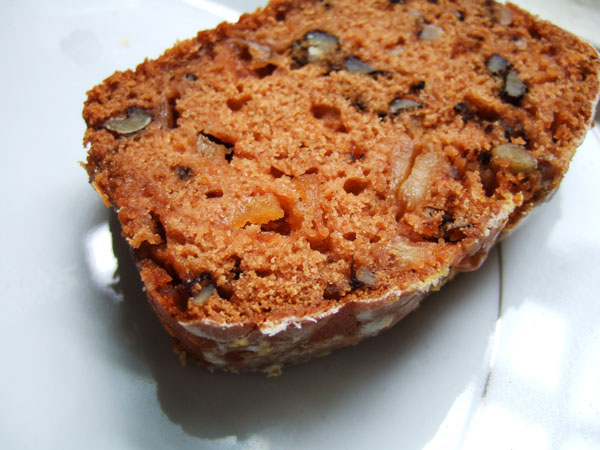 Tomato Soup Cake. Â You’d never guess the secret ingredient. (it’s love!)
Tomato Soup Cake. Â You’d never guess the secret ingredient. (it’s love!)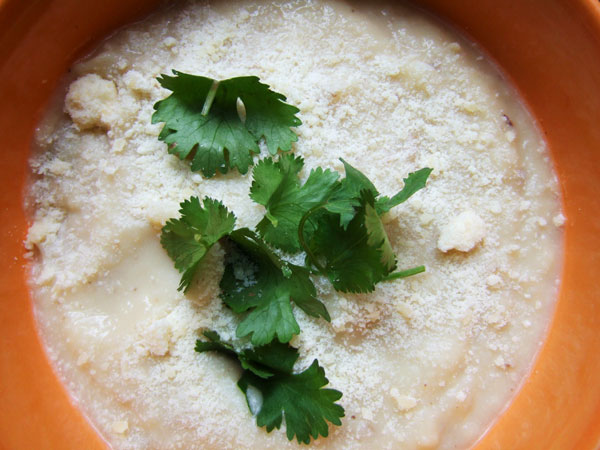 Potato and Onion Soup– one of the most perfect foods.
Potato and Onion Soup– one of the most perfect foods.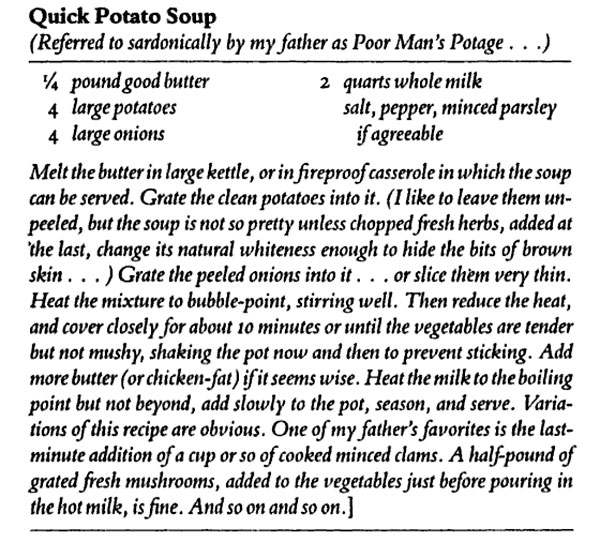
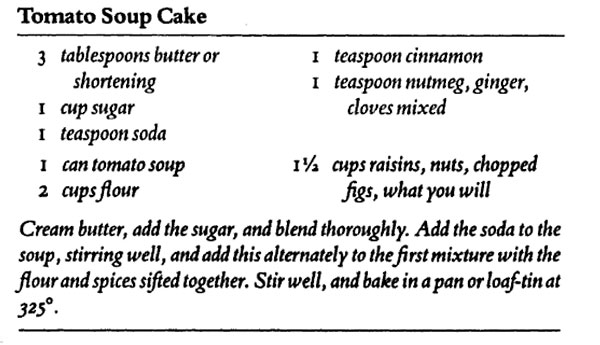
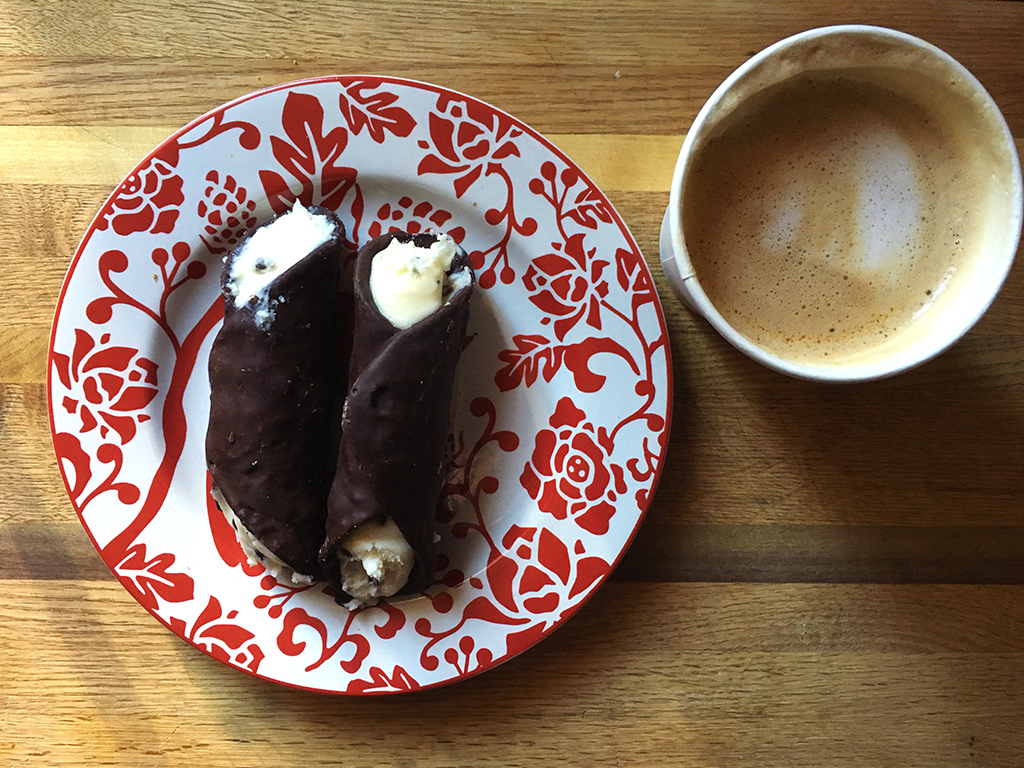
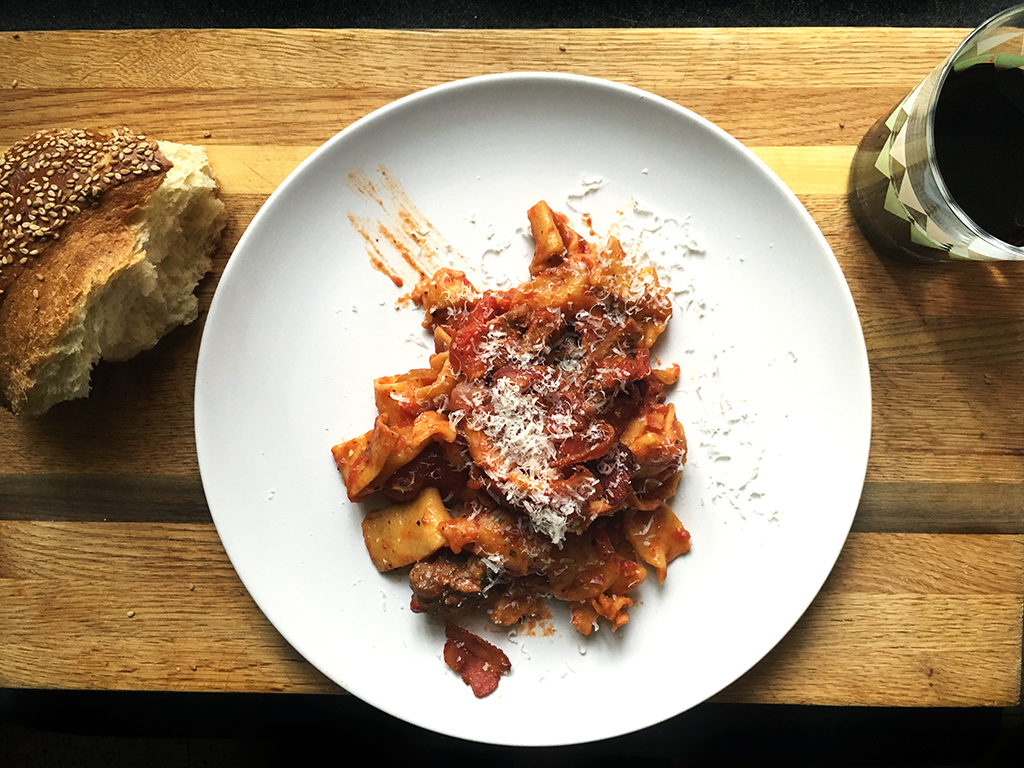
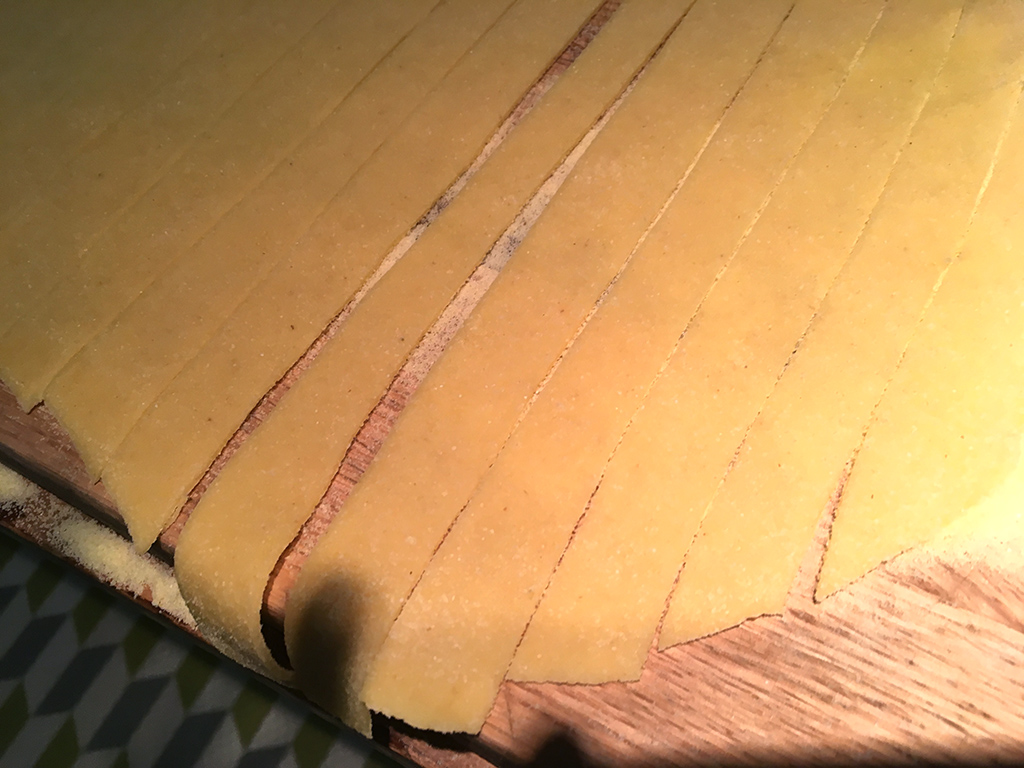
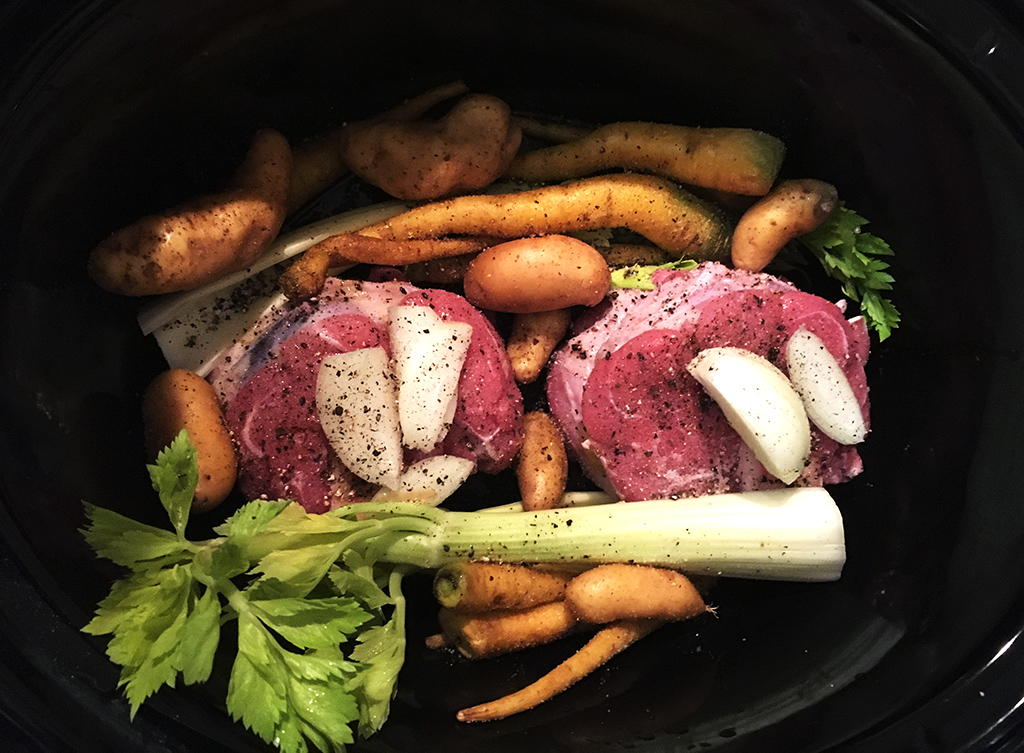
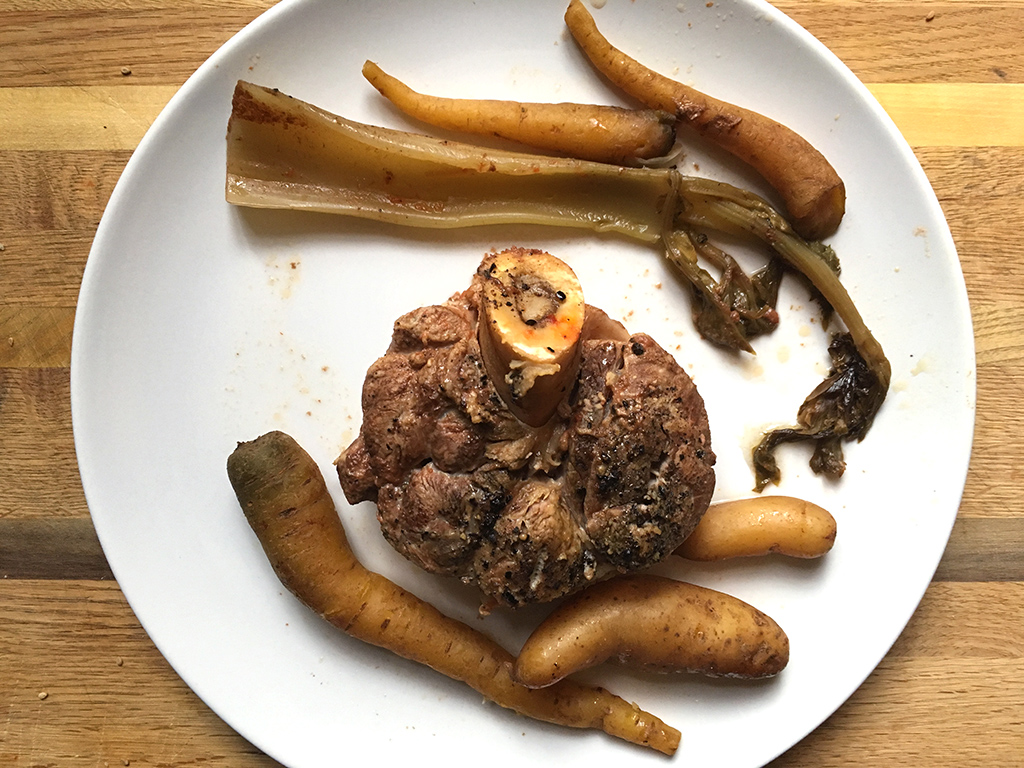
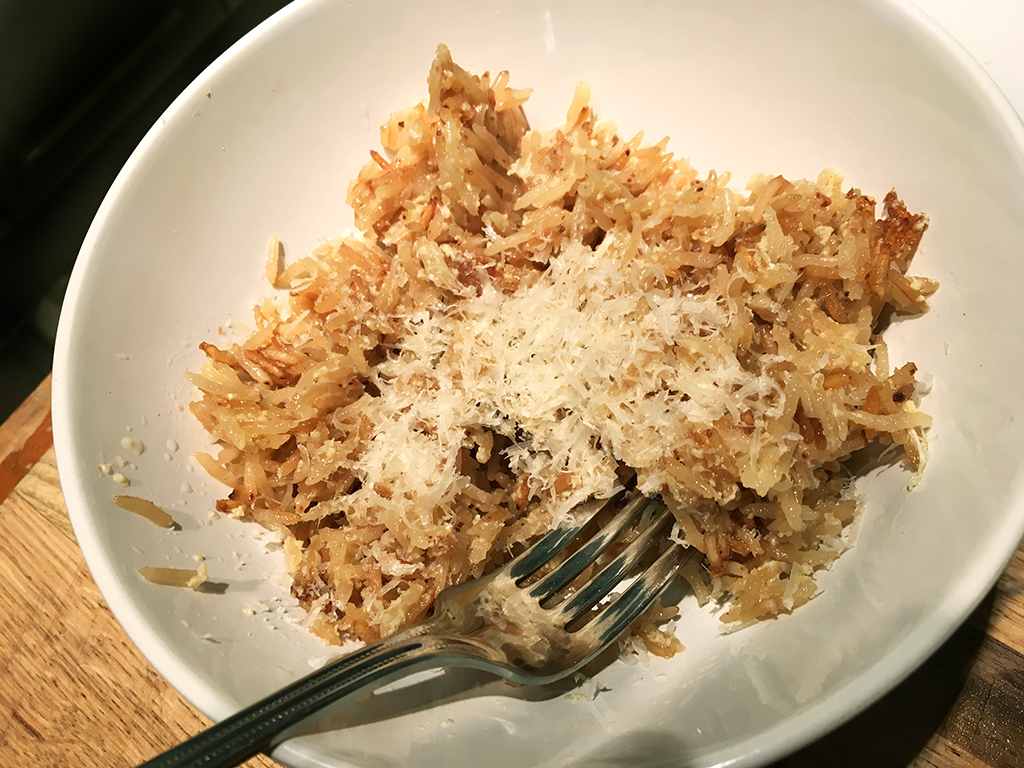
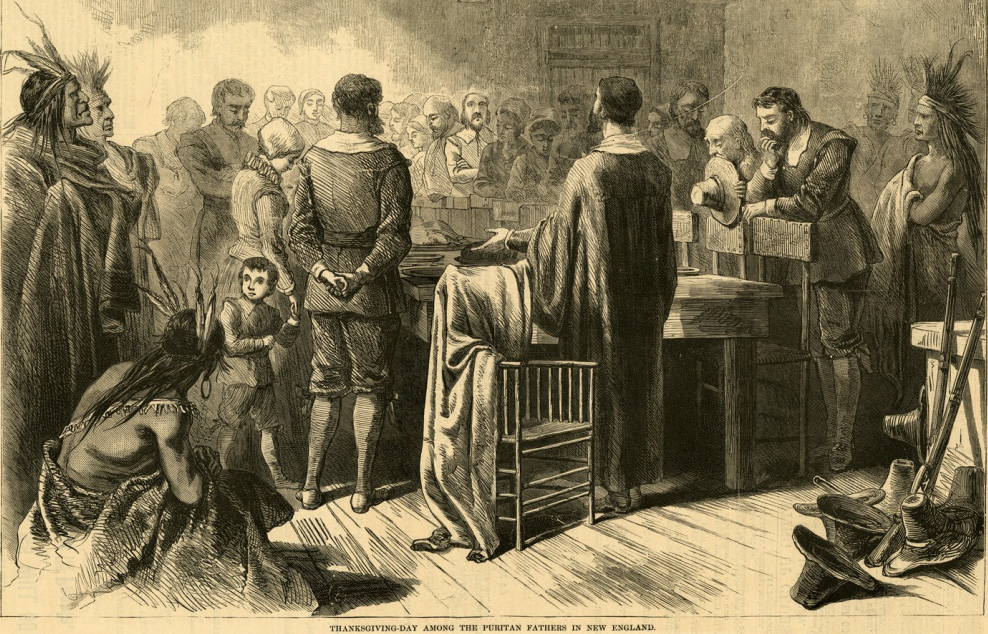

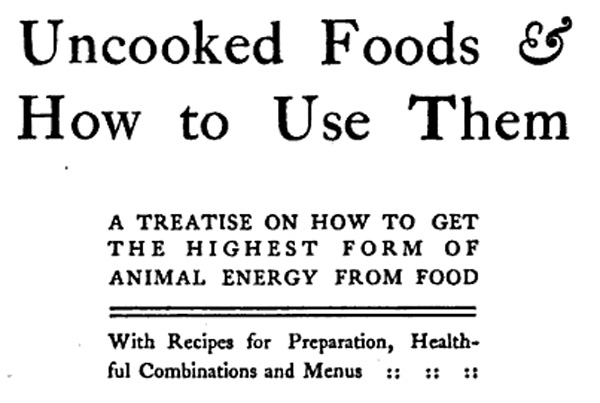
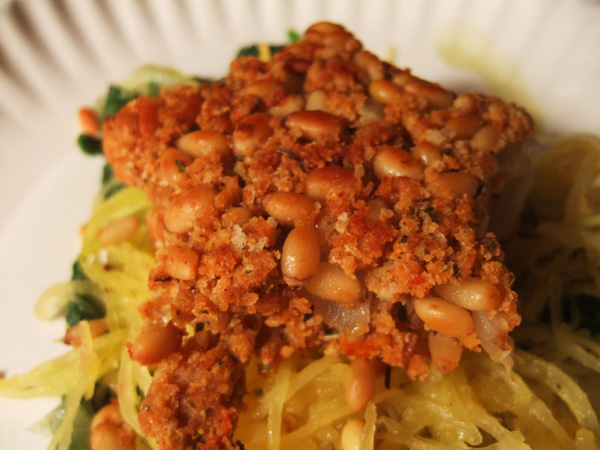
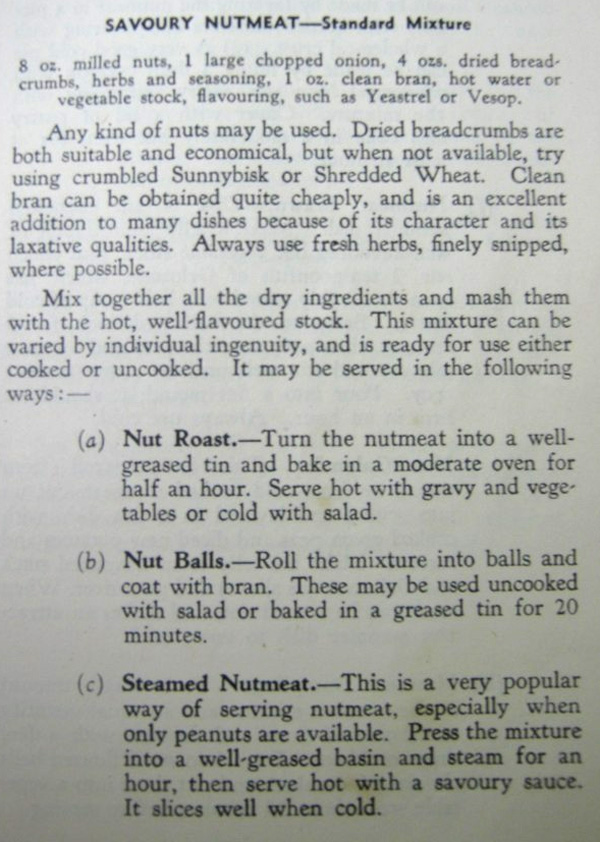
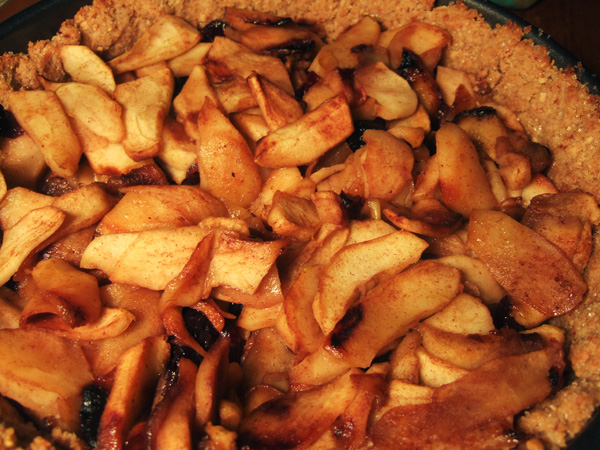
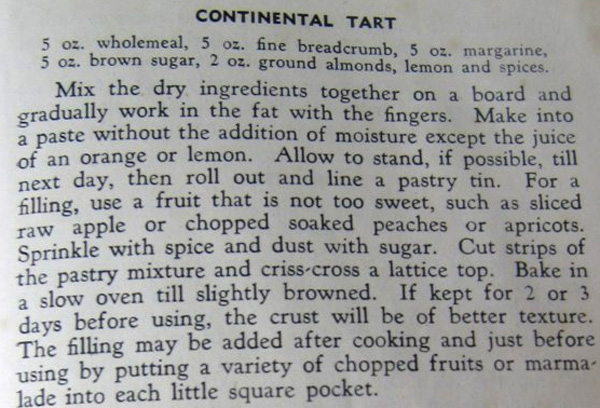
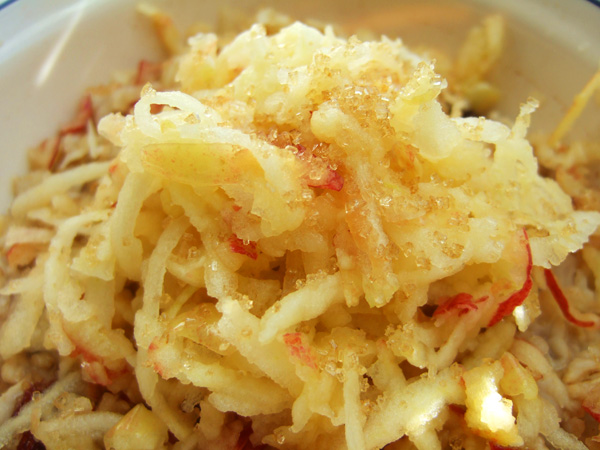




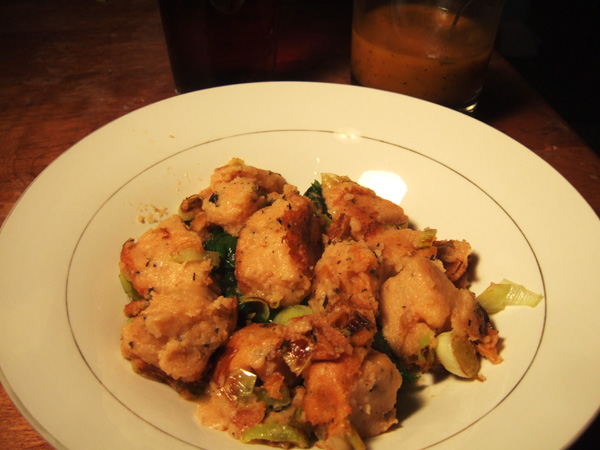
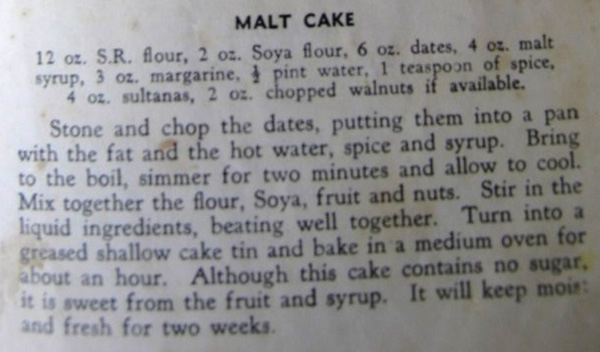



 Sriracha: A HistoryÂ
Sriracha: A History  The Brooklyn Cocktail: A HistoryÂ
The Brooklyn Cocktail: A History  Masters of Social Gastronomy: The Flavor Battles!
Masters of Social Gastronomy: The Flavor Battles! Cocoa in the City: NYC Chocolate Makers
Cocoa in the City: NYC Chocolate Makers Masters of Social Gastronomy:Â Foods that go Bump in the Night
Masters of Social Gastronomy:Â Foods that go Bump in the Night Gin History at LIM Alive @Five
Gin History at LIM Alive @Five Brooklyn Bounty
Brooklyn Bounty Herbal Alcohol Tour: Absinthe
Herbal Alcohol Tour: Absinthe Herbal Alcohol Tour: Gin
Herbal Alcohol Tour: Gin Masters of Social Gastronomy: Floral Flavors at the BBG!
Masters of Social Gastronomy: Floral Flavors at the BBG! The History of Garlic: A Special Dinner at the Farm on Adderley
The History of Garlic: A Special Dinner at the Farm on Adderley Distilling Brooklyn
Distilling Brooklyn At the Kids’ Table: How the Kitchen has Changed
At the Kids’ Table: How the Kitchen has Changed
 Edible Tour of the Tropical Pavilion
Edible Tour of the Tropical Pavilion Masters of Social Gastronomy:Â PIE!!!!!!!!!!!!!!!!!!!!!
Masters of Social Gastronomy:Â PIE!!!!!!!!!!!!!!!!!!!!! Candy: From Early History to Halloween
Candy: From Early History to Halloween Sorry, No Sugar Today
Sorry, No Sugar Today Masters of Social Gastronomy:Â Caffeine, Cocaine, and the Soda of a Nation
Masters of Social Gastronomy: Caffeine, Cocaine, and the Soda of a Nation Masters of Social Gastronomy: The Mysteries of ICE CREAM
Masters of Social Gastronomy: The Mysteries of ICE CREAM
 Food of the Dead: A Culinary History of the Funeral
Food of the Dead: A Culinary History of the Funeral

























 Buzzard Sunday
Buzzard Sunday
 This class includes everything you need to know about the world’s most popular cocktail ingredient—bitters!
This class includes everything you need to know about the world’s most popular cocktail ingredient—bitters! This year, enliven your holiday party with a delicious, historic punch!
This year, enliven your holiday party with a delicious, historic punch!




